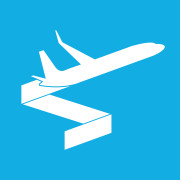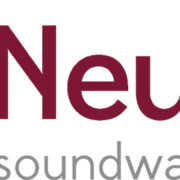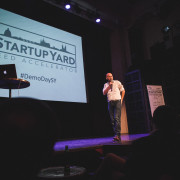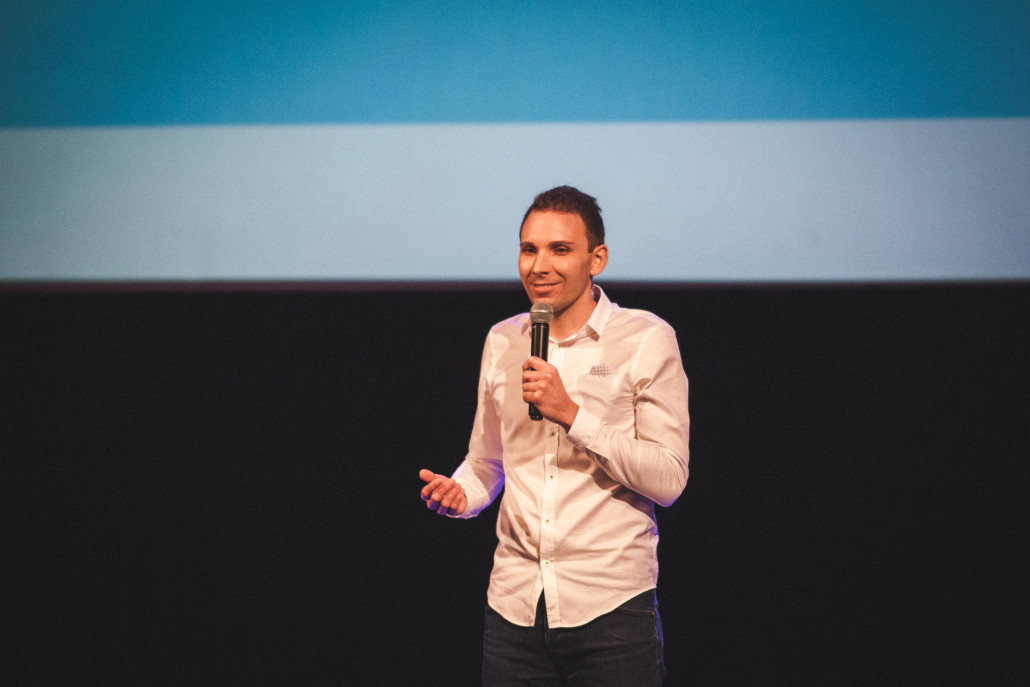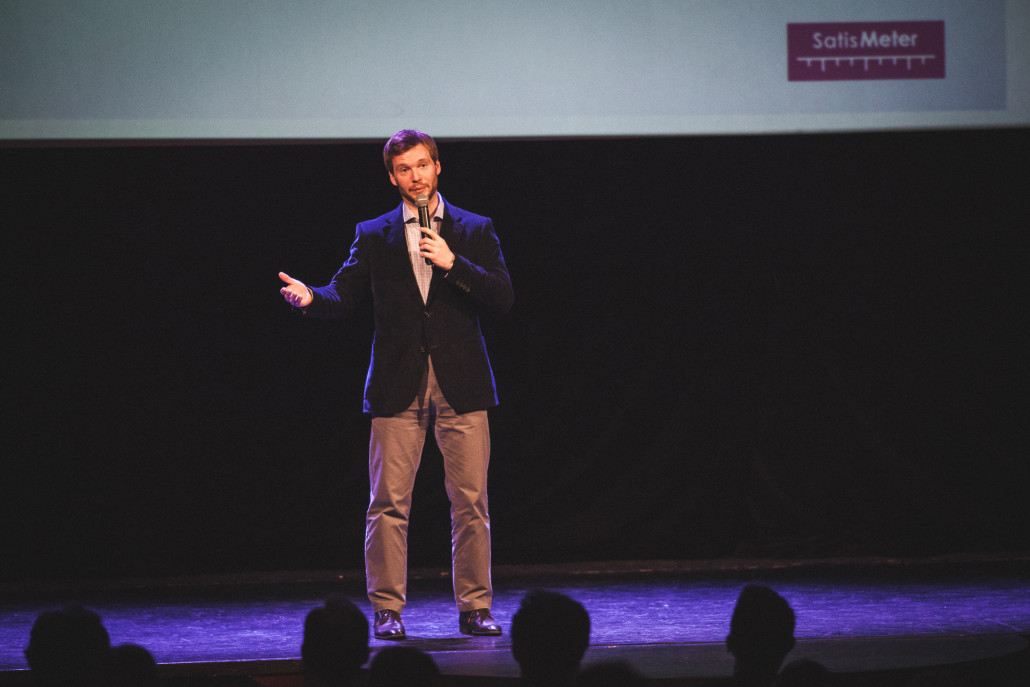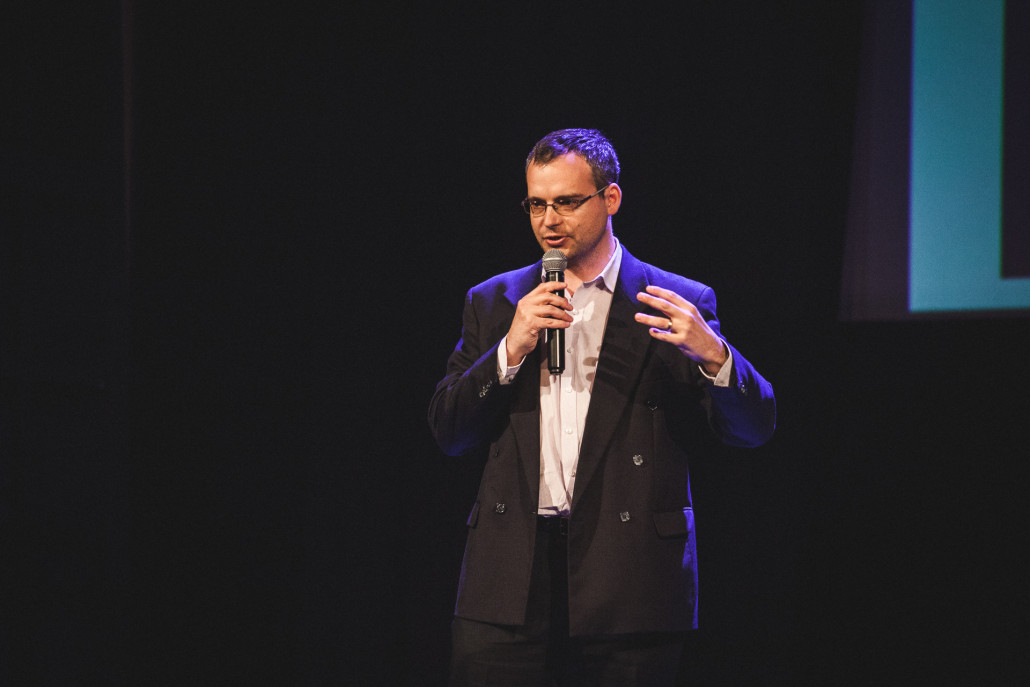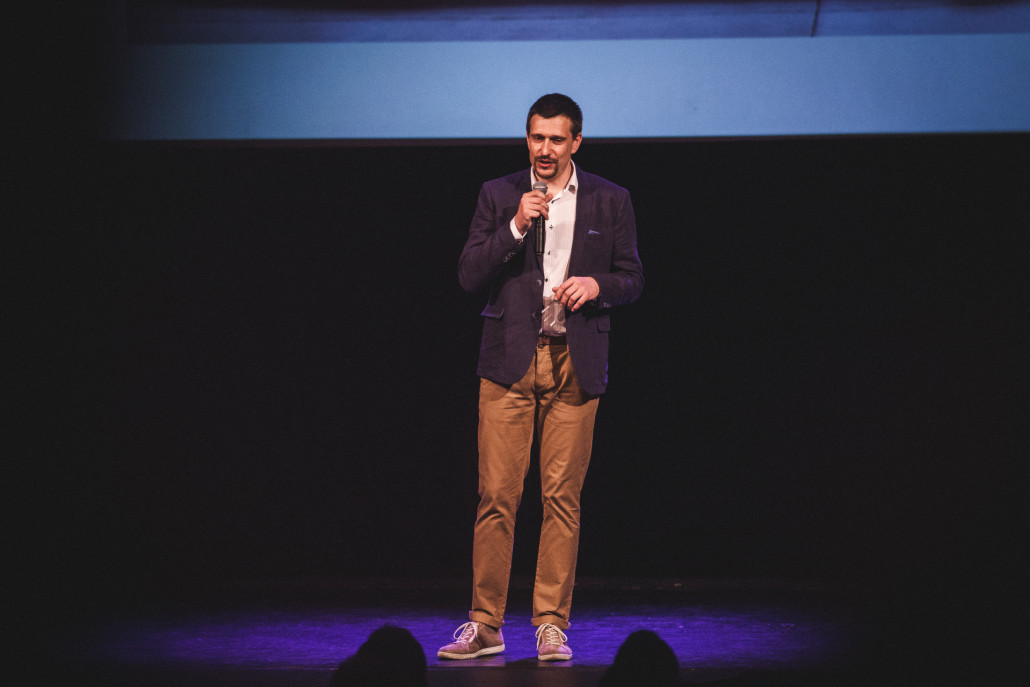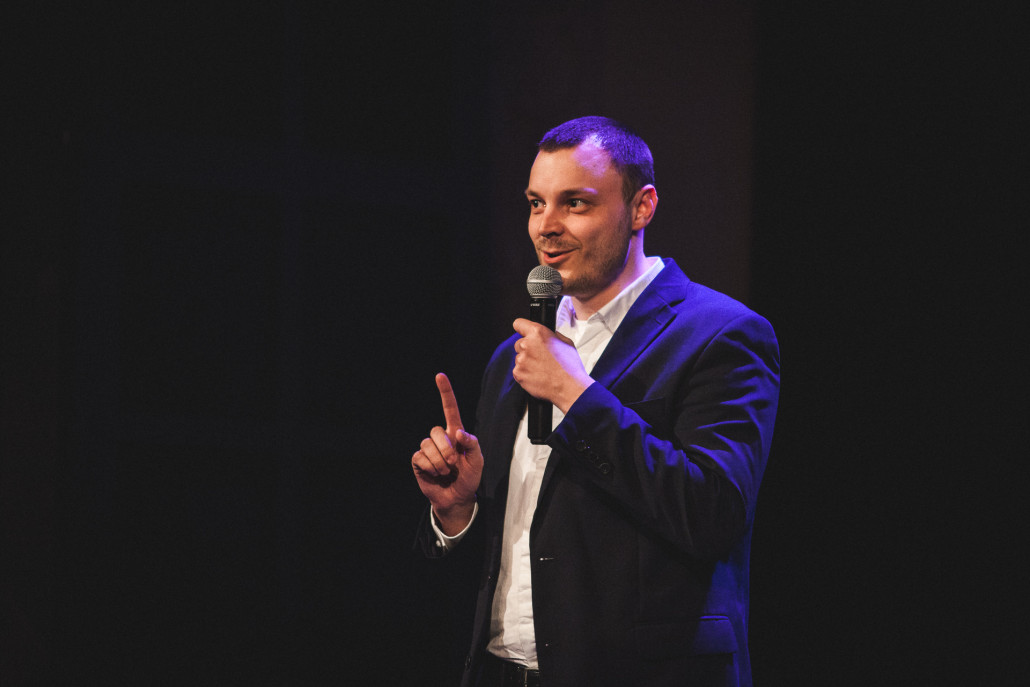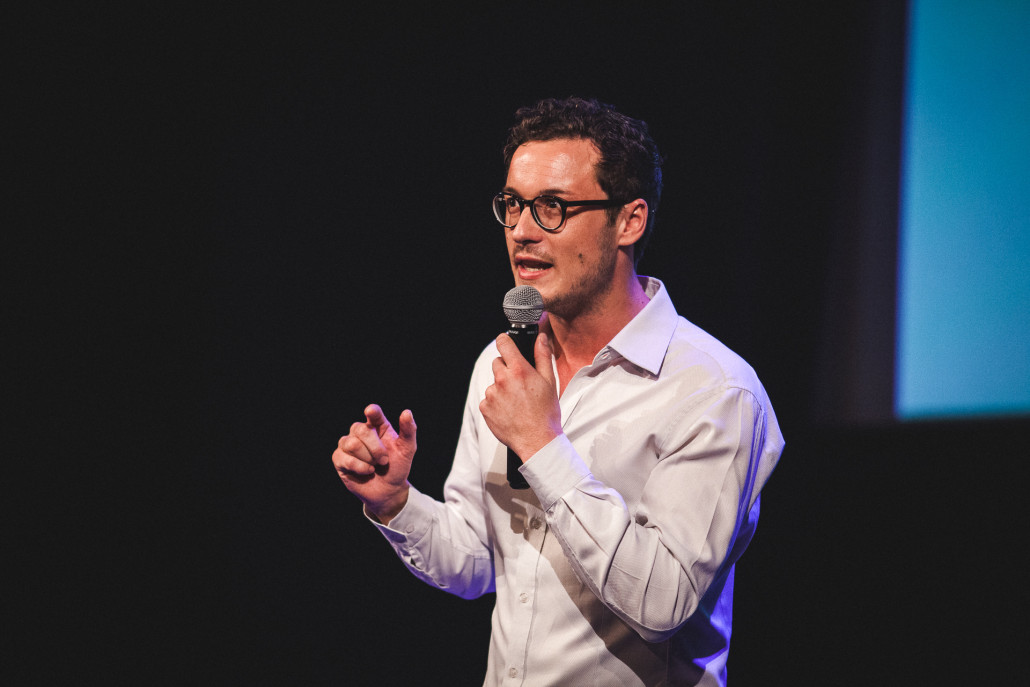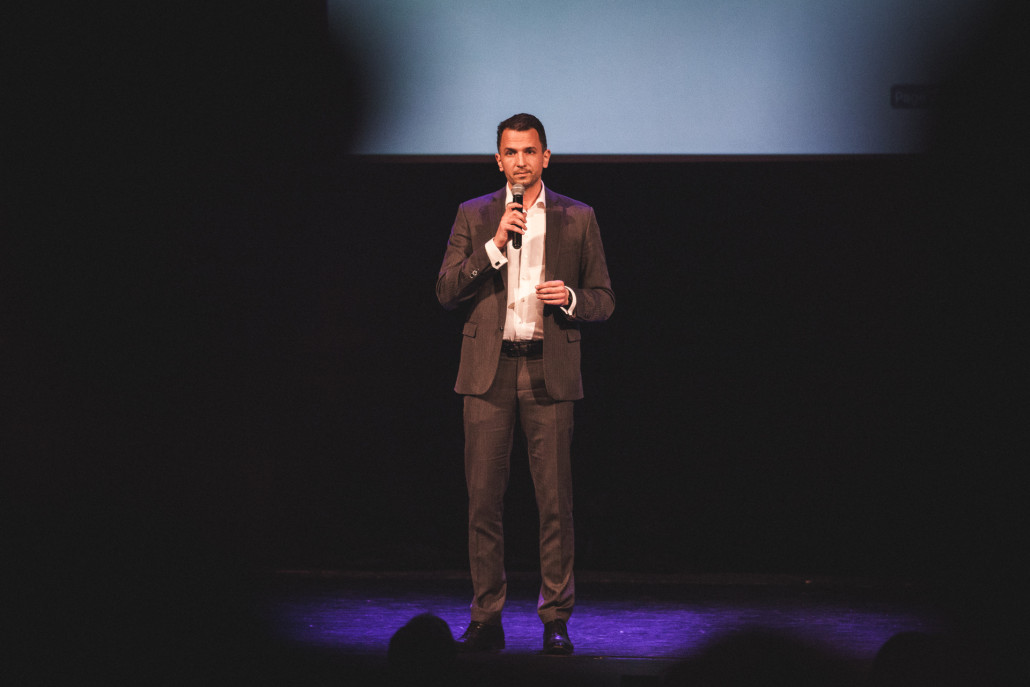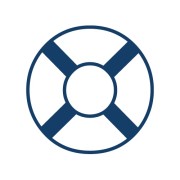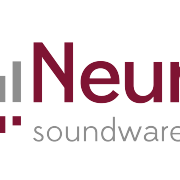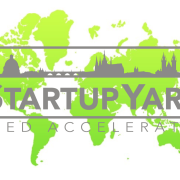StartupYard Alum SpeediFly Raises 300K In Seed Funding
/in Financing, Startups, StartupYard News/by StartupYardFor the second time in a matter of a few weeks, StartupYard is very pleased to announce that yet another StartupYard alum, SY 2016’s SpeediFly, has raised 308,000 euros in seed investment from Czech startup investor Petr Zamecnik.
Congratulations @SpeediFly raising 300K from Czech investor Petr Zamecnik via @startupyard Click To TweetThis is Zamecnik’s second investment in a StartupYard startup- it follows the recent announcement of his involvement with BudgetBakers’ (SY 2015) comparatively sized funding round. The investment includes follow-on financing from StartupYard, in the form of an equity-free grant, supplied thanks to the European Commission’s FIWARE Accelerate program.
Making Sharing a Flight as Easy as Sharing an Uber
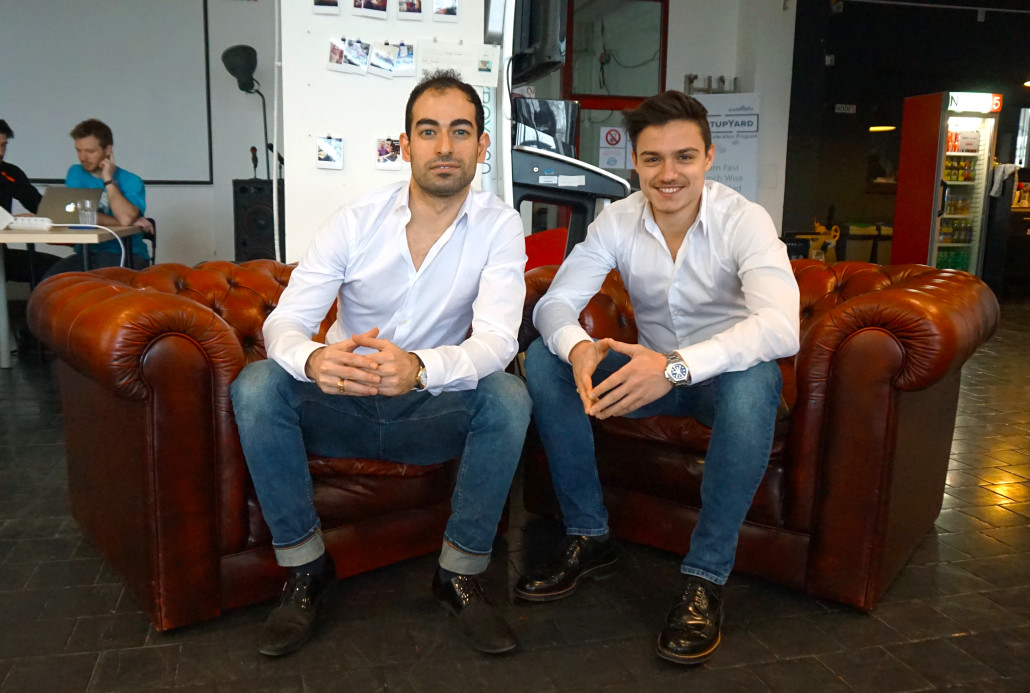
Co-Founders Alex Karadjian, and Stoyan Dobrev
The team, which will work from both London and Sofia, Bulgaria, has launched a private beta in London, where it acquired its first customers in April this year. SpeediFly is a mobile-first travel platform that aims to make booking a last minute flight, even as a group, as easy as sharing a ride on Uber.
The funding will be used to expand the Bulgarian development team, and launch SpeediFly in several European markets, including London, and other major travel hubs.
The team also plans to develop the social travel aspects of the platform, as well as interest based travel recommendations that will allow travelers to combine their favorite activities with the best last-minute travel deals.
Currently in beta for iOS, SpeediFly also plans to expand to Android and the web. The new funds will also be used to expand the platform’s smart recommendation and group booking systems, two core features that will differentiate the startup from other entries in last-minute travel.
A Czech Investor on the Move
Our own Managing Director Cedric Maloux said of the investment round: “It’s not every week that two great companies from our portfolio get the financing they deserve. Zamecnik has made two smart and gutsy moves with these two startups [BudgetBakers and SpeediFly], and we hope that his peers in the region and abroad will take notice.”
Also commenting on the investment was SpeediFly’s Co-Founder and CEO Alex Karadjian, who said: “this will help us scale super quickly and go to new markets, but what is even more exciting to me, at least at this early stage, is the natural bond our team has had with Petr from the very moment we met. Petr’s fast-moving style as an investor and businessman perfectly aligns with the spirit of our team and with our concept- which is all about spontaneity and fun. I am sure this is going to be a great journey together.”
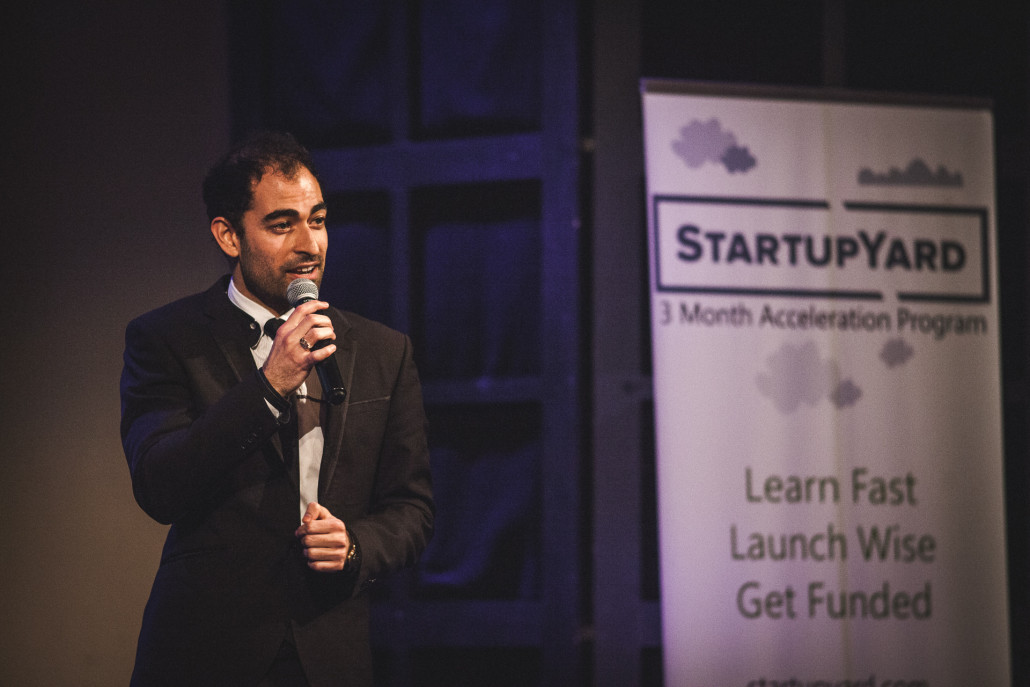
Alex Karadjian of Speedifly talks about social, spontaneous air travel at StartupYard’s 2016 DemoDay
SpeediFly was founded in late 2015, and joined StartupYard in 2016. It aims to be the market leader in mobile-first, social, last minute travel. In the UK alone, the company estimates that there is an untapped potential of 10.2 billion Euros in the last minute travel market. In addition, 56% of European travel searches for last minute bookings are for groups of 3 or more- while none of the major meta-search engines specialize in group bookings, social features, or shared payments.
SY Alum NeuronSoundware Wins Vodafone Napad Roku
/in Financing, Startups, StartupYard News/by StartupYardWe are incredibly pleased to announce that StartupYard 2016 team Neuron SoundWare, has won the prestigious competition Napad Roku. Napad Roku is put on by Vodafone Foundation to find the best ideas from Czech and Slovak startups, and bring them onto the global stage.

The Neuron SoundWare Team: Photo by Forbes.cz
Also among the top finishers was our own Salutara, enabling medical travel worldwide. This win represents yet another in our alumni’s series of recent successes.
The prize includes 300,000 CZK (11,000 Euros) from Vodafone Foundation, additional funds for legal services, and new tablet computers.
Napad Roku: The Best of Czechia and Slovakia
Neuron Soundware, led by Co-Founder and CEO Pavel Konecny, won out against over 170 competing startups. The company is building a framework for neural networks to understand, learn from, and process sounds. As reported by Forbes recently This will enable their technology to, for example, diagnose technical problems in heavy machinery and sensitive hardware, including such things as 3D printers, car engines, and air conditioning systems, among much else.
The technology can also be applied to the voice: at StartupYard’s recent DemoDay, where Neuron Soundware premiered the pitch that won at Napad Roku, Konecny demonstrated how a neural network could listen to, and then perfectly reproduce a human voice, opening up the possibility of using natural human voices instead of computer generated voices in any range of applications, from call centers to robots. The technology also makes manipulation of the voice possible, changing accents, inflections, emotional tone, and much else.
This opens possibilities for the NeuronSoundware team in a wide range of industries, from AI personal assistants like Viv, to industry 4.0 and distributed “contour” manufacturing technology, where more and more products will be fabricated in smaller factories, closer to their destination markets.
Congratulations to Pavel and the whole NeuronSoundware team!
 Pavel with CoFounder Filip Sedlak
Pavel with CoFounder Filip Sedlak
 Pavel Konecny, CoFounder and CEO
Pavel Konecny, CoFounder and CEO
StartupYard DemoDay 2016 Highlights
/in Startups, StartupYard News/by StartupYardDemoDay 2016: The Big Moments
StartupYard last night introduced its 6th cohort of startups to the world. We are extremely proud, and judging from our community’s reaction, so were you. Thank you for supporting us and encouraging us to do what we do. Your value to our startups is truly immeasurable.
But which of the companies at DemoDay 2016 were your favorites, and why?
Click on the picture of your favorite startup founder below to tweet about them.
(Photos courtesy of Milos Potuzak. Check out his other work on his website, or on Facebook.)
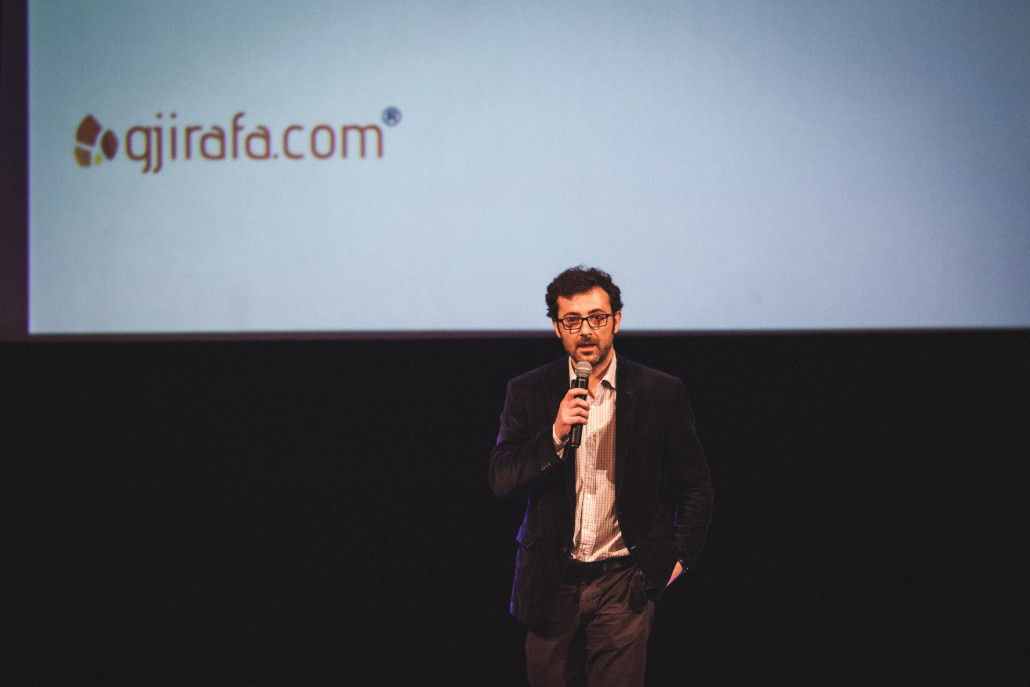
Gjirafa Founder and CEO Mergim Cahani talks about the ups and downs of founding a high growth startup. Click to Tweet!
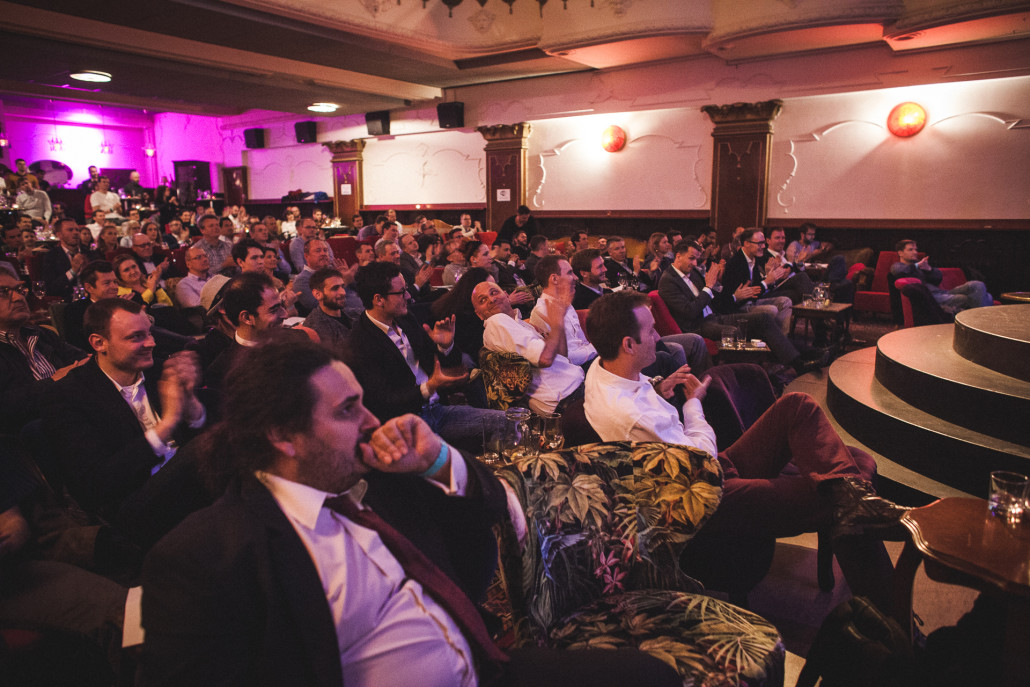
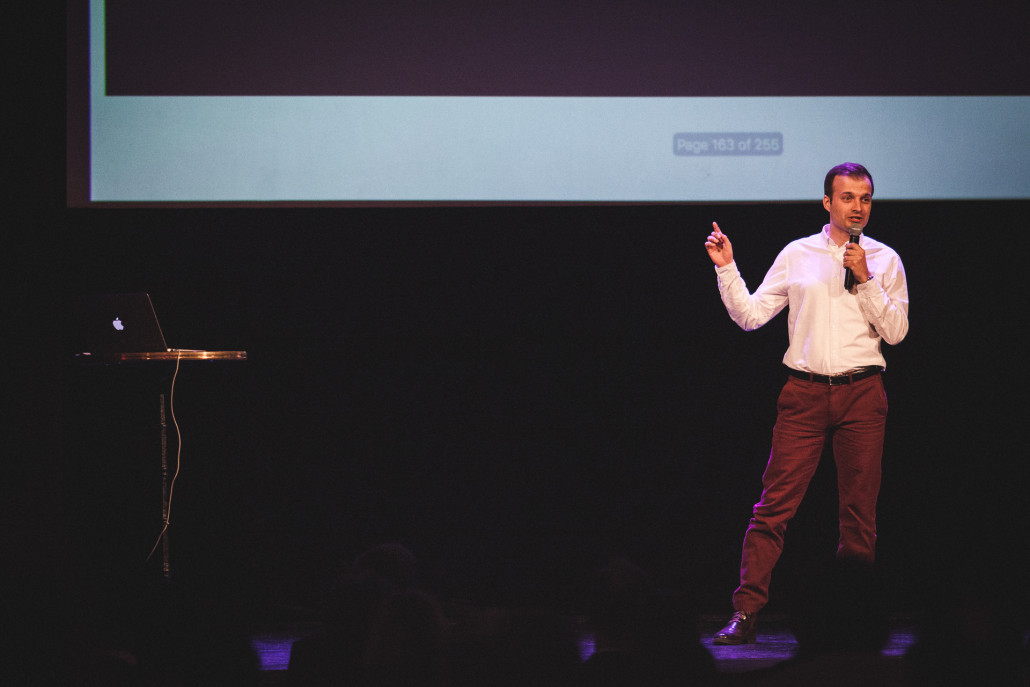
Piotr Piekos of TotemInteractive introduces the future of outdoor digital advertising. Click to Tweet!
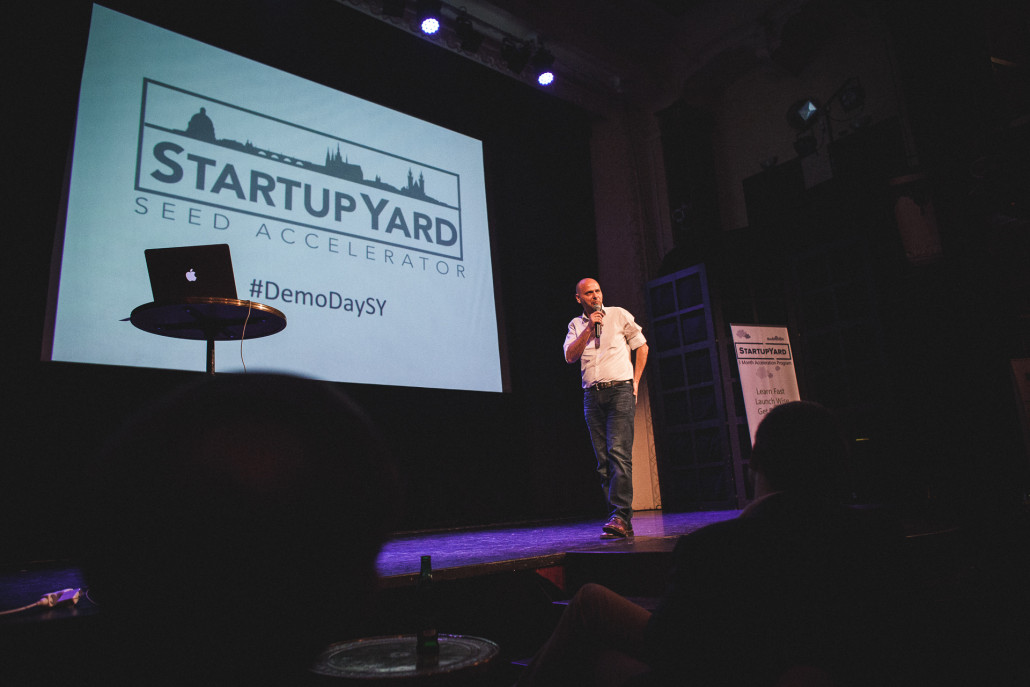
Cedric Maloux makes closing remarks.

The Royal, a classic venue, for a not-so-classic event.

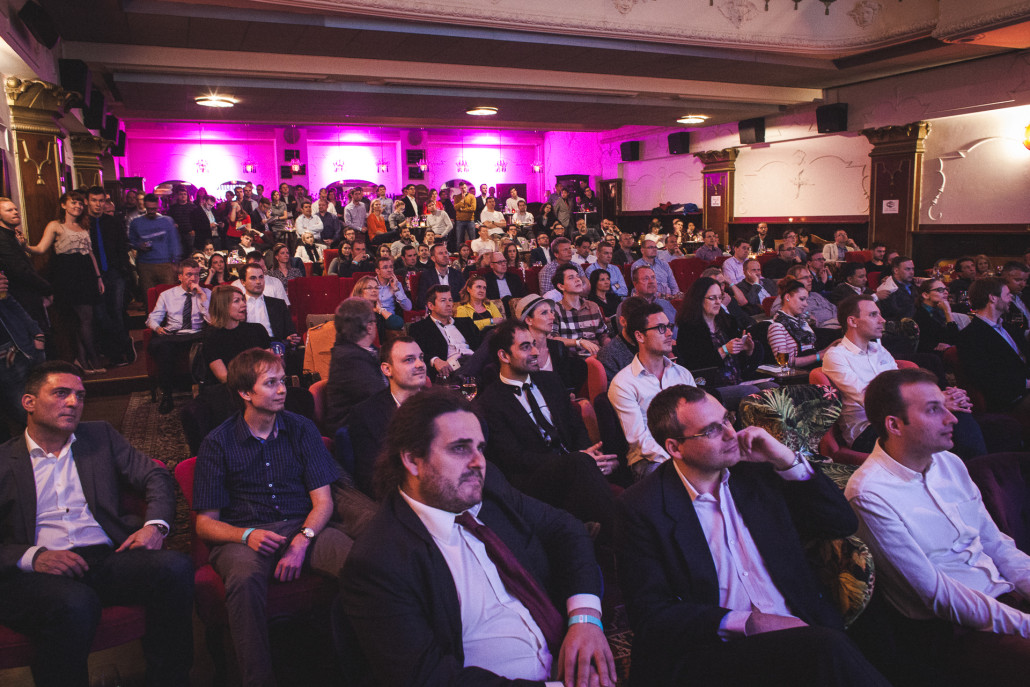
The crowd at The Royal was impressive.

Don’t forget to check out our exclusive interviews with each Startup from 2016:
TotemInteractive: Make Ads People Love
/in Interviews, Life at an Accelerator, Startups, StartupYard News/by StartupYardTotemInteractive, StartupYard’s first Polish startup team, came to StartupYard with a novel concept, and has executed on a broad vision to change digital outdoor advertising in a major way. The team, experienced in digital media and cloud systems, is creating a platform into which marketers and advertisers can put their creative energy to generate meaningful, lovable, interactive display ads in place of boring, old fashioned posters and billboards.
I caught up with Piotr Piekos, CoFounder and CEO at TotemInteractive, to talk about the future of outdoor digital advertising, and cloud based marketing. Here’s what he had to say:
Hi Piotr, tell us a bit about TotemInteractive and your team. How did you come up with the idea?
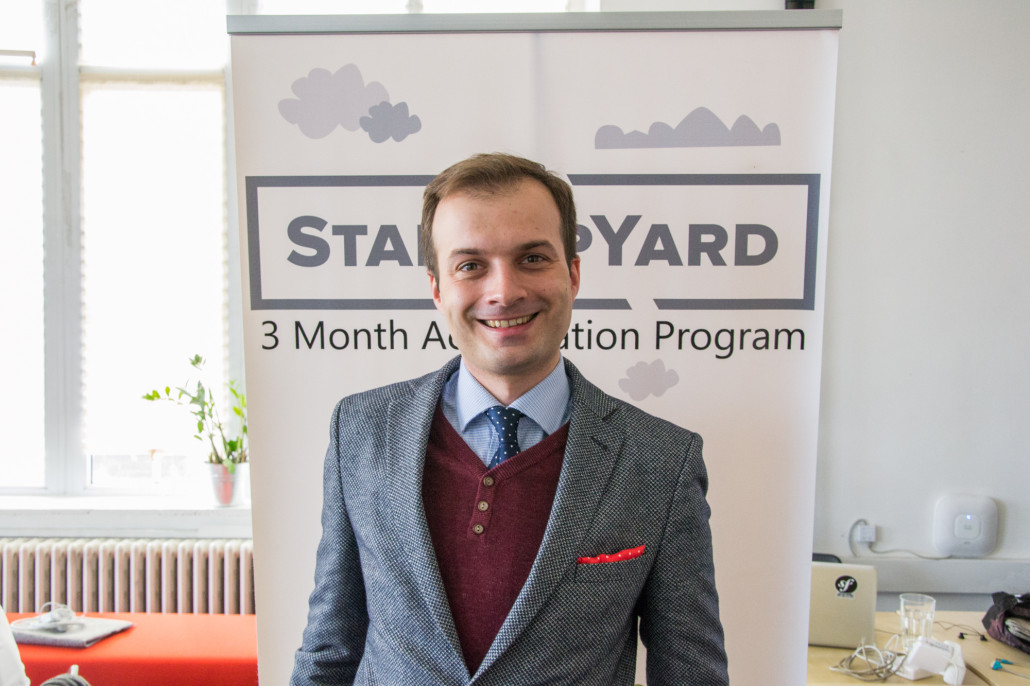
Pietor Piekos, CoFounder and CEO at TotemInteractive
TotemInteractive is a software platform that aims to help marketers with deployment and performance measurement of cross-platform, interactive marketing campaigns launched on electronic screens in public and in-store locations. Basically, interactive display advertising, instead of boring old posters.
The idea came from our observation of two trends: the propagation of digital screens in public spaces, and the fact that mobile devices have become an inseparable part of almost every activity that we do outdoors. TotemInteractive believes that digital advertising outdoors as often depicted in scfi movies in not just an imaginary future. We think that it is a natural consequence of the mobile and IoT revolution. TotemInteractive’s plaform aims to be among the first players on that market.
You have a background working with digital agencies. How does that help you when it comes to creating a platform for digital interactive ads?
Throughout my professional career I had seen a number of solutions aiming to resolve the problem of unified and streamlined visual communication across different devices. Some of them already succeeded in industries like gas and oil (crisis centers) or places like decision-support systems for high-level corporate executives.
Budget constraints are less of a worry for these types of businesses, allowing the vendors to reach high complexity and sophistication with the systems they deploy. I have been involved with several dozen such products. Knowing exactly what our target market (advertisers) expects, we are able to provide a lean and user friendly answer to the market demand. In short: we want to move what is already possible with multi-million dollar equipment to the world of advertising, where price is always a consideration.
What about your team? How are you uniquely qualified to bring display ads into the modern age?
To answer this question, I will first need to explain a bit about the requirements for the platform. We had composed a team with very technical specific requirements in mind: such as quality of service (your ad has to be there at all times), and scale (platform needs to work on hundreds of screens simultaneously).
Our team consists of people who are experts in building complex, distributed systems. Michal is a system-engineer who is a specialist in cloud based deployments. Kamil and Piotr have been working on large scale deployments of tailored B2B systems for years.
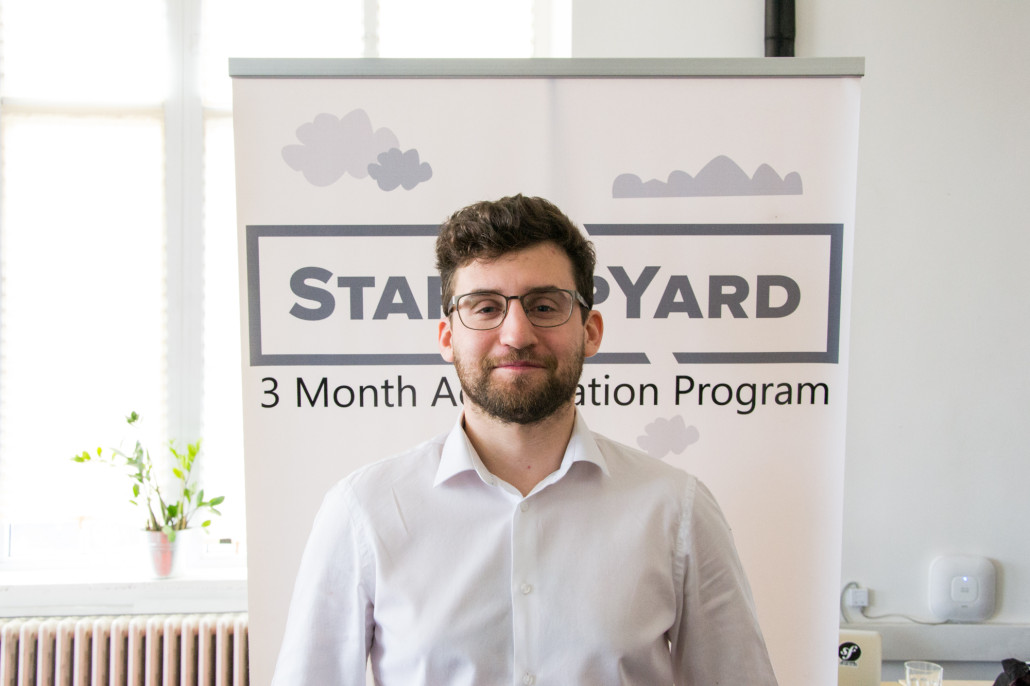
Leszek Knoll
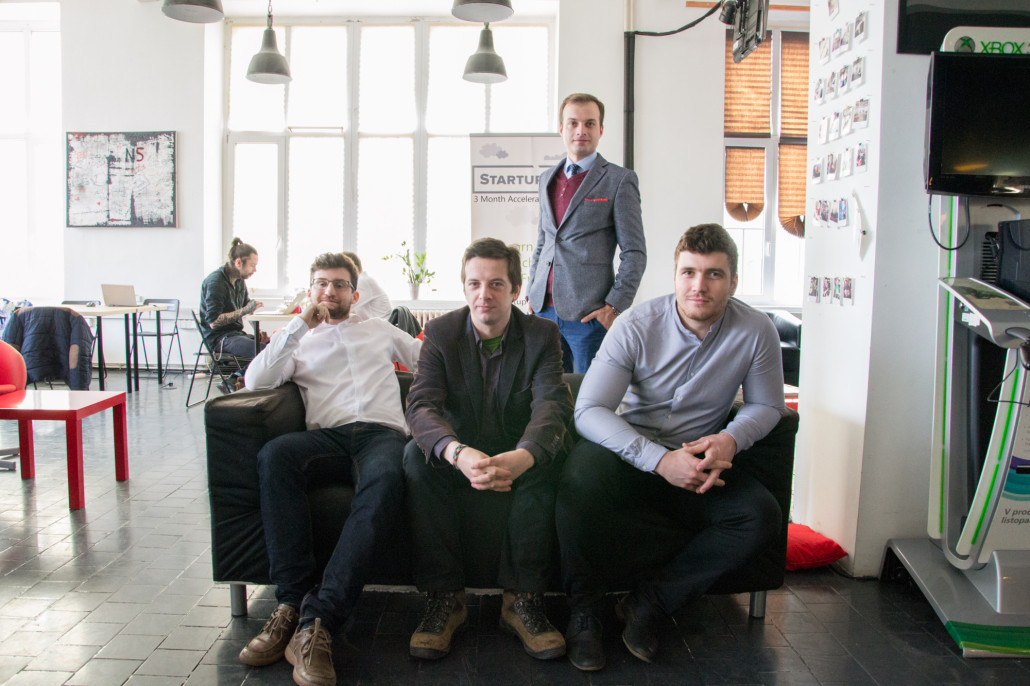
The TotemInteractive Team
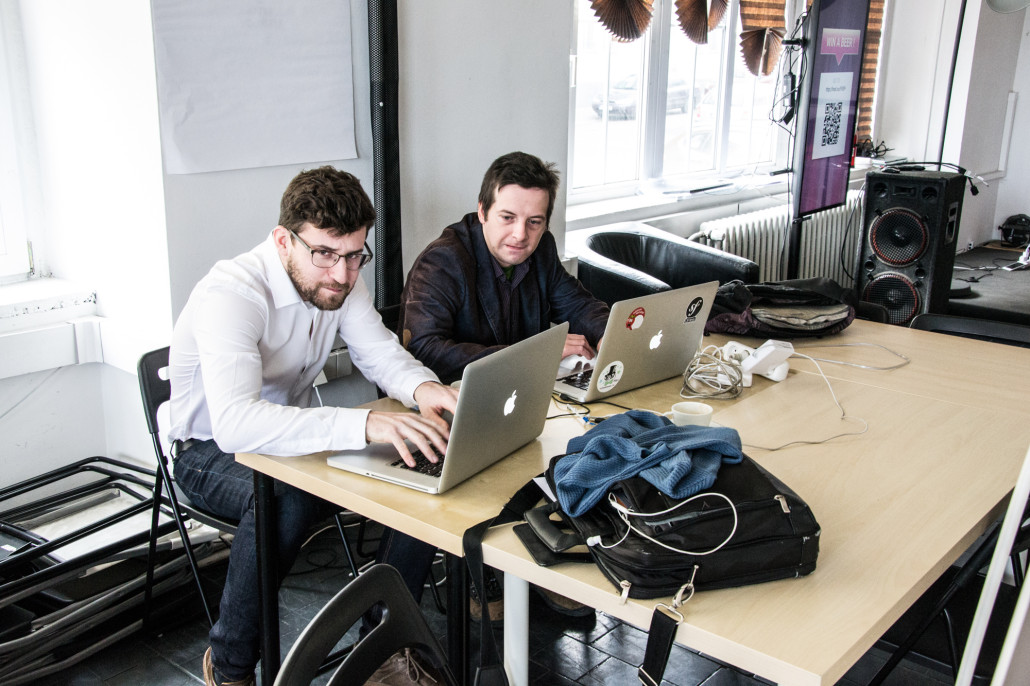
The Totem Interactive Team Hard at Work
On the business side: Leszek Knoll, my CoFounder and COO, brings startup entrepreneurial experience on board. He had built startups in the past and knows well the rules of the game.
I have been working in professional audio-visual industry for several years: my expertise is based on several dozen deployed, consulted and rescued projects related to large scale visualization systems. Lastly, we are backed by several mentors who hold strategic positions in advertising segments: in agencies, brands, and large media-house conglomerates.
Tell us a little about how the TotemInteractive platform works. What does it enable advertisers to do?
TotemInteractive makes it possible to directly interact with a big digital screen in public spaces using your mobile phone. It can be a game, where you use your mobile as a controller, or a socially engaging voting system for your favourite band during the music festival. Whatever you can image.
Our platform stays hidden behind the scenes, a cloud based system that supports various applications for live screens. It’s a sophisticated enabler, allowing marketers to very easily create and deploy interactive campaigns, without a need to engage substantial resources to prepare, code, test and deploy their own cloud based or local solutions.
How is TotemInteractive different from traditional static display ads?
It is not boring! Our platform transforms traditional ads into something that delivers real value to the consumer. Suddenly, those displays become engaging, fun and an experience sharable with others.
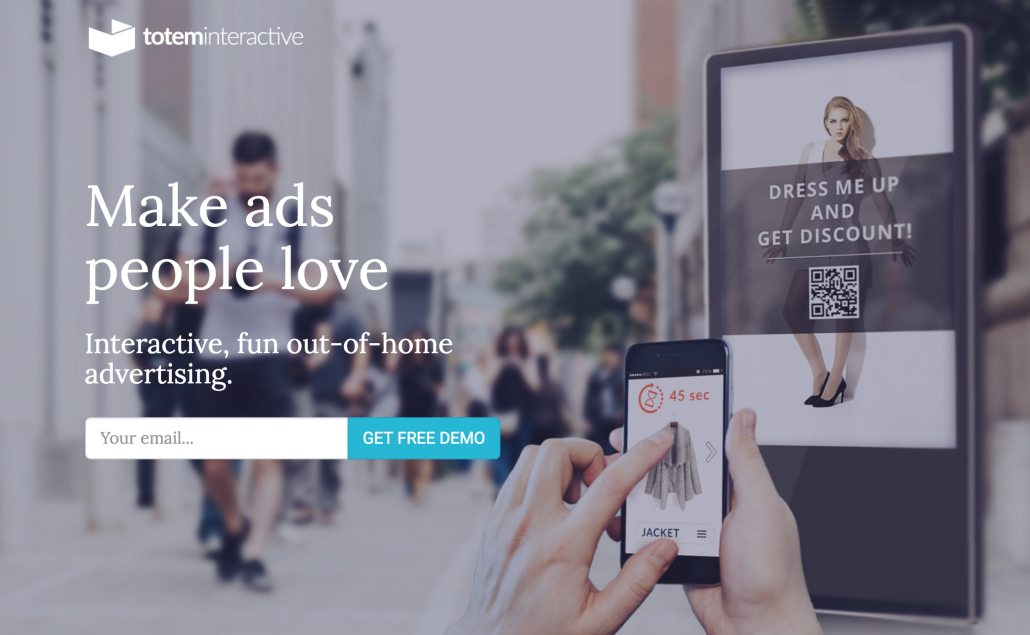
You’ve already run a few pilot campaigns. Can you tell us a little about how these worked, and what the results were?
Even though our MVP is still in development phase, we had done a proof of concept campaign during a job fair, at Silesian University of Technology. Our results show that, first of all: people are really keen on interacting with this new type of medium, when the motivation for doing so is clear.
Registering more than 10 engagements per hour, per screen, gives us good reason to believe that such advertising can be much more effective than traditional display ads. Not to mention, that 42% of the people who played our game were willing to share their Facebook data with us through the platform. Try doing something like that with a poster.
You have spent quite a bit of time identifying market needs and exploring different approaches to the market. What has the exploration process revealed that you didn’t know a few months ago?
Major conclusion was that a seed-stage startup will have very hard times when it comes to deployment of a platform across multiple screen networks. We had found out that it is a very capital intense goal, that we simply cannot afford to chase at this moment.
What are your immediate plans for expansion? What does TotemInteractive have planned for the next year?
We want to reach the retail market (in-store digital signage, banking, car dealerships). Gradually we also want to move to the events market. In the next year we want to be recognizable by marketers in CEE and western Europe as these guys that can put their creative, potentially viral, ideas into motion.
Long term, where do you want to be in 5 years?
Market leader in interactive digital signage! We want to provide marketers not only with technology, but with unsurpassed reach (network aggregation), for their digital outdoor campaigns.
How has StartupYard shaped the company’s growth in the past 3 months? Are there any particular mentors who had an outsized impact on your team, direction, or traction?
Well, StartupYard was immensely helpful in terms of momentum that our business reached during this time. Definitely, mentoring was a revealing and beneficial experience for us. It was about knowledge sharing, feedback (both positive and negative), but also some of the mentors allowed us to enter real sales opportunities that we are chasing at the moment. Without SY it would not be possible. But not only that: I believe that our business development potential is now multiplied by your expertise in marketing and the power of your network.
Boatify: Your Boating Experience Platform
/in Interviews, Life at an Accelerator, Startups/by StartupYardThe boatify team joined StartupYard this year as our very first team representing Switzerland, and its emerging startup scene. Found and CEO Johannes Röhrenbach is passionate about boating, and lives the dream by making his home a boat on Lake Zurich.
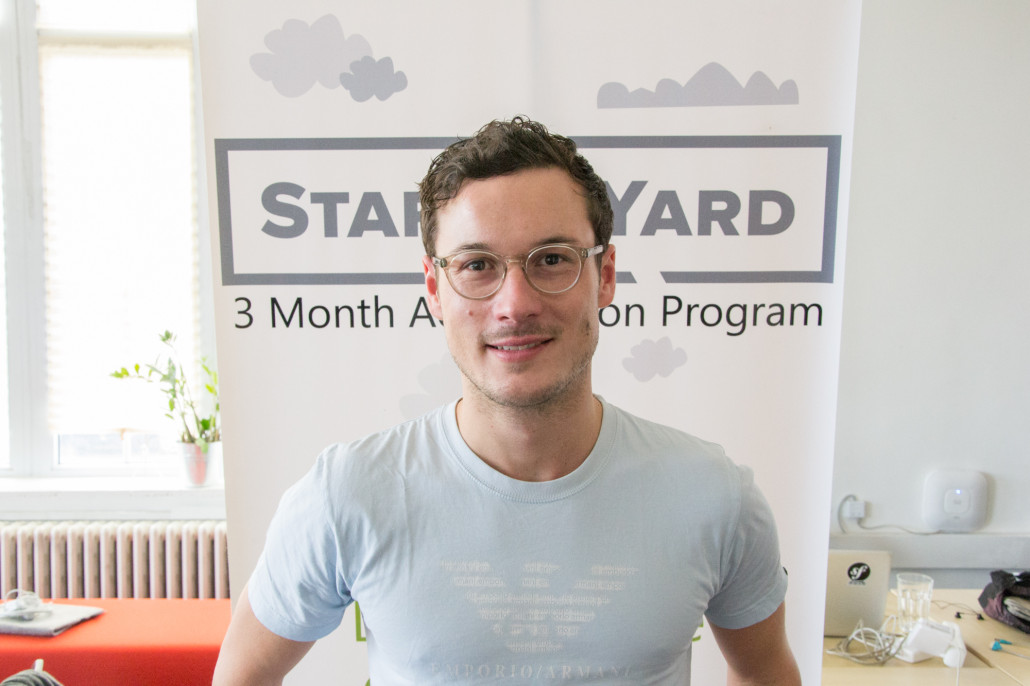
Johannes Röhrenbach, Founder and CEO at Boatify
The team has set out to build the world’s leading boat-sharing platform, centered around building enjoyable experiences for average people in Zurich, and in ports and harbours around the world. I caught up with Johannes this week to talk in detail about his dreams for the boatify platform.
Hi Johannes, tell us a bit about boatify. How did you come up with the idea?
Well, at the very end of August 2014 a friend of mine invited me on a short cruise on the Lake in Zurich, in the evening´s magic night atmosphere only a lake can have. It was a very old boat – 45 years old -, full of wood, lovely details and a breathtaking charm. And I immediately fell in love.
My friend was living on the boat – the Blue Ocean -, together with his family since the beginning of the summer. But they were considering selling it, since for four people it would have been too small to stay throughout autumn and winter. So I decided to buy it.
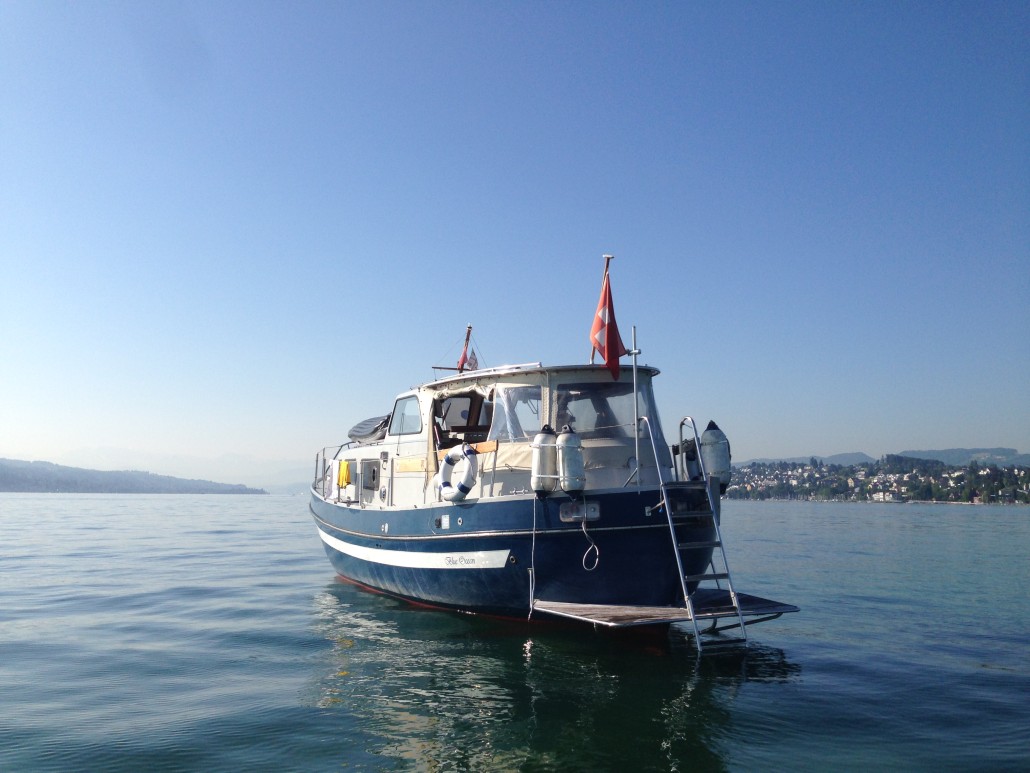
Boatify Flagship, The Blue Ocean
It was a quick and spontaneous decision, all of a sudden. I needed to hurry up a lot, doing my skippers’ license and preparing everything to resettle. In the end of September I finally moved onto the boat myself.
Since then I´ve experienced the most magical moments one can imagine: the early morning´s dawn on the lake with the particular calmness the water only has in these hours, playing guitar in softly shaking sunsets, poker session with whisky and cigars – on a boat in the very center of the town. Most of that I experienced only on my own or with good friends – and with a strange feeling that these experiences should really be available for others. This is how I came up with the idea to start a platform, where people can share boating experiences: boatify.
What are some of the other ways that people can currently book boating experiences? Why is boatify better?
See, if you want to go on boat around Zurich, you can whether take a passenger boat, you can rent a pedalo, and in case you have a skipper’s license you can rent a motorboat from one of the few commercial providers – not very nice boats actually, without any charm, and for horrendous prices. There’s basically no access to these thousands of unused private boats around – and no platform offering easy and affordable experiences on boats.
In other locations, yacht charter platforms provide access to boats. But they don’t solve the problem of finding the perfect crew. So sailors use old school forums to connect and plan their trips together. We add the community dimension to the boats: boatify is a service to bring people together onboard. Boat lovers and those who might be ones in the future.
What sorts of features will boatify have in the first year? What can people do with the platform?
It´s all about the experience and the social interaction. Our key approach is to show impressions of interesting boat experiences on the very first visit – and to the right people. On our own website, but also in social networks and further platforms such as Eventbrite or Groupon. You will firstly show interest in an experience, later you can confirm your reservation. If you find something interesting, share it with your friends on Facebook and Co.
Boatify is all about connecting the right people and bringing them together on board, hence user generated content and user profiles play an important role: as boat owner you can find mechanics or other experts – and trusted officers, who care for your boat and the maintenance when you’re away. As officer you can list your own experiences and earn better ranks the more five-star ratings you get, and for the more boats you´ll become accredited for.
And also as a normal user, you can pin outstanding boating spots on the map, suggest itineraries and tell your last unforgettable boating story to the crowd.
We merge the schedules of the boats with the schedules of the experiences and integrate with further booking systems of our partners such as charter companies, so every involved stakeholder can easily manage his/her upcoming bookings.
Building a community around boating is an important part of your mission. Can you tell us more about how you plan to accomplish this?
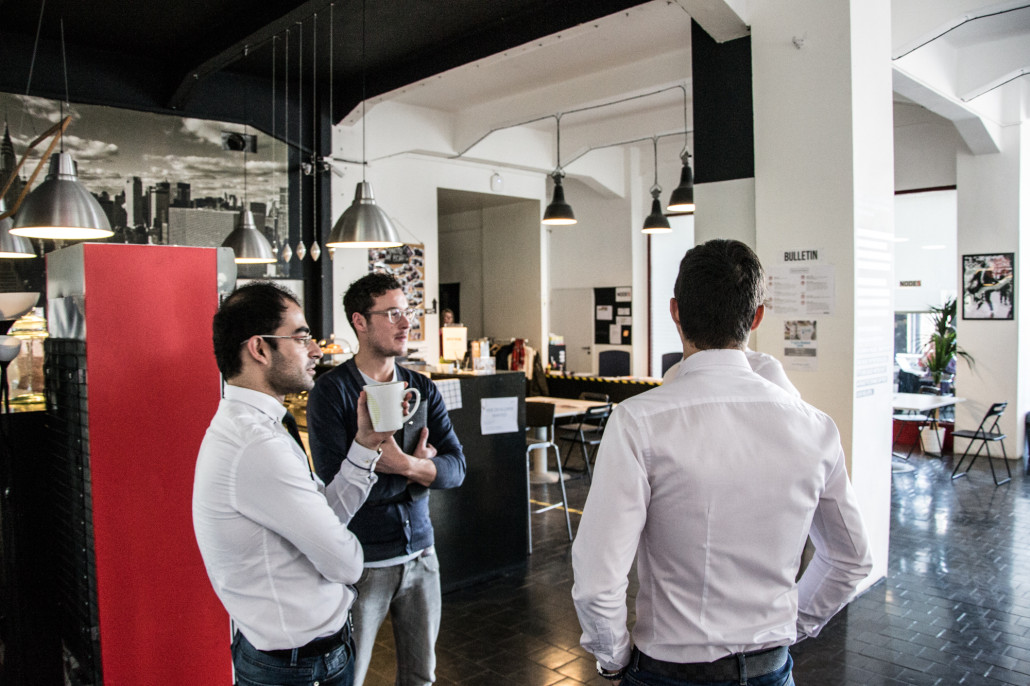
Johannes in conversation with Executive in Residence Viktor Fischer
It´s all about visibility. Boat lovers must understand that there’s finally someone bringing their community online.. So we must be on everyone’s mind. We’ll be present at boat clubs and magazines – and on the water of course: In Zurich with the wonderful Blue Ocean and in Berlin with the even more wonderful MS Fitzgerald. We’ll organize outstanding activities like a fleet parade or a boat sharing day, so everybody will talk about us.
It is our magic story we will tell. To build a particular atmosphere and to convince everybody to jump on board with us – as our first 23 early bird officers already did. It´s all about living the boating dream.
To leverage that, this summer we will start the craziest project ever: a Boat-Road-Show. As an international startup and the digital nomads we are, we will prove that it is in fact possible to run a company from wherever you are in the world – even from a boat!
So this is what we’ll do: starting in Barcelona, from July on, we will travel the coast line from Spain and France, to Italy and Sicily, hopping over from harbour to harbour, telling our story, organizing parties and other experiences – and convincing boat owners, skippers and all the others to follow the boatify dream and to continue to start their own boatify businesses.
We need to find the perfect sponsors and we will engage an army of talented interns to come with us to make this blueprint of experience come true.
You’re launching in Zurich. That seems an odd choice for a boating platform. What’s your reasoning, and what’s your growth strategy over the next year or so?
The boat stock in Zurich and the many lakes around is bigger than you think! There are more than 100.000 private boats of all classes existing in Switzerland; additionally Lake of Constance on its own (together with the bigger German and Austrian part) already contains over 65.000 private boats.
Additionally, Zurich is very attractive as a market, not just because it is one of the richest cities in the world, but in particular because the very city center embraces the lake. In summer, there are thousands of people spending time all around on the shore: a great chance to get visibility – especially on an eye-catching boat like the Blue Ocean. Adding some special attractions nobody has seen before, like small concerts from boat to shore, or a Boat-Sharing-Day in addition to the very popular Rooftop-Day will get us a lot of attention.
Our growth strategy: The Boat-Road-Show will give us a lot PR, but it´ll probably take another season until we will have serious operations going on in the Mediterranean Sea. For this summer, we focus our operations towards Lake of Zurich and Lake of Constance, where we want to sell 3000 experiences throughout the year. Our marketing activities all around Europe will bring as a lot of awareness online – and we’ll convert it to business back home in Zurich.
The key for being successful is an interesting portfolio of offers on the supply side, which is why we´ve already gathered most commercial providers of this region on the platform. Now we need to add the experiences on top of the boats, and there we go.
At the same time, we’re preparing to launch in the Mid-East. Our lead officer in Dubai has already organized the first partnerships with charter companies, so that we can test the market in the coming months and start serious operations there from October on – with the beginning of the season.
As with AirBnB and Uber, there are always legal concerns about liability and insurance. How will you give your users and boat owners peace of mind?
I´m a strong believer in and warrior for the Shared Economy! However, many liability and insurance questions still remain unclear across all kinds of solutions. Additionally, traditional businesses such as taxi companies or hotels suffer from smart peer-to-peer platforms all over the world – AirBnB and Uber are the blueprints for it.
But also in our case there´s already a lobby of commercial boat trip companies existing in Berlin, fighting against smaller boat businesses. And that´s not okay! There is so much unused property in this world and it´s not right not to let the majority of society access it – whereas nowadays technologies can make it so easy for us to share.
There remains a lot of work to do to clarify and solve all the open questions and issues. For us and for other shared economy pioneers. But the time has come to make the world a better, fairer and more efficient place – so let´s do it!
Can you talk about some kinds of experiences that users can have on your platform?
Sure! I´d love to! As I´m a hobby musician and play a lot of instruments, the first official boatify experience has been a Jam Session on board a river boat in Prague – three weeks ago. But there can be so much more: Dinner Cruises, for companies or privately, other cultural events like lectures, concerts, maybe even vernissages. On boatify you can buy a ticket for a trip or a venue, like for a boat party or something more special like a speed dating on a boat. Or, you can book entire packages, to celebrate your birthday – or even your wedding on board. Our vision: to enable you to do everything on the water that you could do on land – we want to bring life from land to water! This is also why we’re organizing our Boat-Road-Show: we basically live our idea.
At the same time an experience does not necessarily need to be something outstanding. If you like the water and you want to run your small business as boat skipping teacher without being dependent on a company, or if you want to offer fishing, diving or snorkeling trips, waterski, sightseeing tours, or even just spend your evenings in an exclusive surrounding with some hand picked people: do it with boatify.
It is up to the creativity of our officers: whatever concept you would like to offer on boatify, whatever is most requested in your home region, we’ll give you the tool to realize it.
What opportunities does boatify offer for boating professionals? What about boat owners?
Beside our customers, the two main roles interacting on our platform are boat owners and officers. Boat owners own the property, but often they don’t have time to use their boats. So the boats sit unused – which is actually not very good for a boat. Boats need to be aired, they need to be moved and they need to be continuously run to keep machinery and equipment in proper shape. So what boat owners normally do is to engage marinas or other professional providers to look after their boats, for a lot of money – and in addition to the high maintenance and docking costs.
Owning a boat is almost always a financial drain- sometimes unnexpectedly so. This is what we want to turn around: we want to make a boat not only financially feasible, but even profitable.
And we do it via our officer approach. In building a community of experienced boat enthusiasts, who don’t necessarily need to own a boat themselves, we bring the boat owners in contact on our platform with all the knowledge and capacities they’re lacking. They can get in touch with mechanics and other experts, who will always care for the boat, when the boat owner doesn’t have time himself.
In return, these boat enthusiasts get access to the boats: as soon as an officer becomes certified by us, he can get in contact with all the boat owners in his region; the ones already registered on our platform and new ones he can approach by himself, supported by the boatify team and other officers around. When a boat owner trusts an officer, he can accredit him for his boat and the officer is allowed to operate the boat, to create experience offers and to run his own business with it.
How do you plan to grow usership of your platform in the early stages?
We will provide the best tool to organize yourself around boating, but we must succeed building a particular movement around our platform. We do this gathering as many boat enthusiasts as possible around us and incentivizing them to do so themselves. It will feel extremely cool, to be part of the boatify crew – the more you contribute, the higher your officer rank gets and the greater benefits you get: it´s a kind of gamification factor we use here.
As soon as we´ve proven our concept, we´ll start with our „officer academy program“, hence we will provide the entire life cycle for want-to-be boat lovers: we offer young people the chance to do their skipper license with us for free, training them in all relevant aspects of security and safety and teaching them how to realize the most amazing boat experiences. Then we give them the boats and there they go.
In each region we´ll be active, we’ll employ a lead officer – the Fleet Admiral – organizing all activities and building the community himself: you can partly compare this to the Uber approach, they are an important example for us.
Where do you hope boatify will be in 5 years time?
The overall goal is to create the world´s biggest boating community. In five years we want to be active worldwide, mainly covering our starting market in Europe. We want to become the one tool whenever you think to start or organize something on board. We want to make boating accessible for everyone, to overcome its exclusivity and to take usage of the millions of private boats sitting unused all around the world.
With a properly implemented Sharing Economy concept we want to set an example against unfair distribution of goods and become an important player with a clear code of conduct in an industry that is not organized sustainably at all. The dream is to gain enough power to engage in some of the world´s biggest environmental problems like the pollution of the seas.
How has StartupYard impacted boatify’s development? Have any particular mentors been especially important in getting you to where you are today?
At StartupYard we finally learned to outline the boating experience as the core product on our platform. We had these visions in our minds from the very beginning, but were always pitching boatify as a marketplace solution for boats. With your continuous challenge of our positioning and its execution, Lloyd and Cedric´s, of course, Michal´s and Viktor´s, we’ve now become extremely focused and well-prepared on how to bring our vision to reality.
We had to face some major problems during our time at StartupYard as well – starting development over from scratch after one month. Our dear mentor Vladimir Kozak has helped us a lot in this time and he still is, continuously structuring and challenging all our development approach. We’ve profited a lot from personal introductions and the support of a lot of our mentors, especially Ladana Edwards with her unbeatable supportive friendliness, Daniel Hastik continually feeding us with valuable startup insights and Wallace Green, who helped us in building greatest visions with his endless creativity and enthusiasm.
Stream.Plus: Netflix for Brands
/in Interviews, Life at an Accelerator, Startups, StartupYard News/by StartupYardStream.Plus is the last video platform brands will ever need, according to Founder Marek Novy. Late of Seznam.cz and also a longtime StartupYard mentor, now turned StartupYard member, Marek has spent his career in digital media, and says that the current video advertising market is fundamentally broken.
Stream.Plus is designed to offer brands, as well as viewers and video curators, a better model for monetization of high quality branded video, and the growth of MCNs (Multi Channel Networks). Stream.Plus is based on a viewer-centric approach to online video, and bills itself as “Netflix For Brands.” I caught up with Marek this week to talk more about his startup: Stream.Plus
Hi Marek, Tell us a little bit about yourself and Stream.Plus.
My passion is learning and building new things, it is my name anyway- [Novy means “new” in Czech]. I quit my job at Seznam.cz, because I feel I have to do much more learning and building than I was able there. But it get me thinking about future of media and I also met my cofounders there. Stream.Plus is the materialization of our vision of where media, and specifically video, is going.
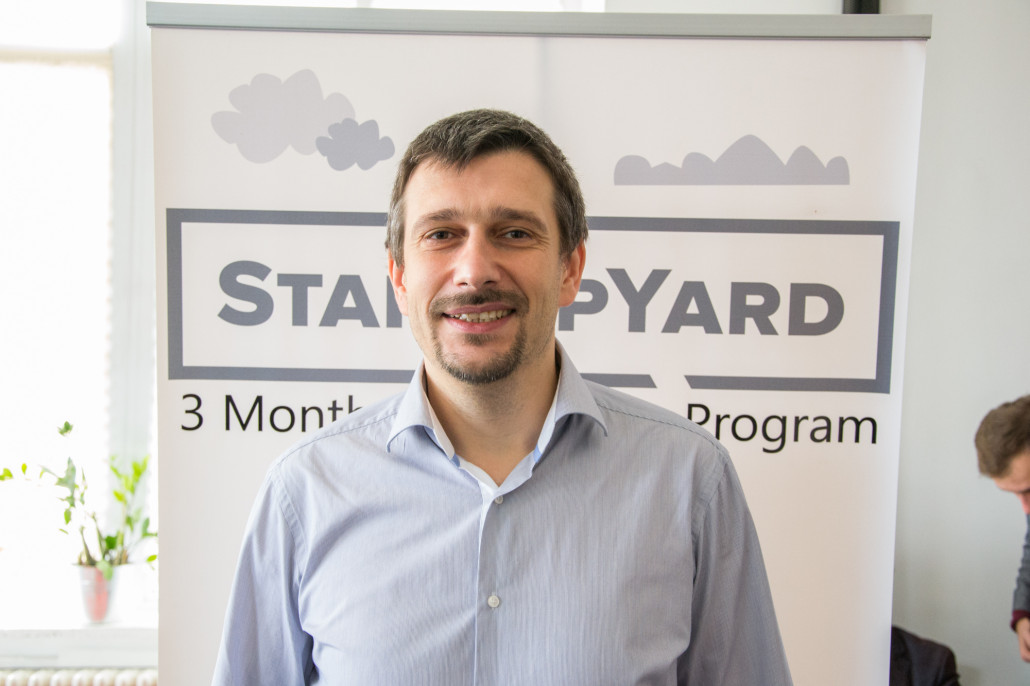
Marek Novy, Founder and CEO at Stream.Plus
What makes Stream.Plus different from other streaming video platforms? What can you do that can’t be found on YouTube or Facebook?
The most important difference for me is the purpose, even though it might be not so obvious. Our purpose is to help organizations, brands or individuals to build and operate their own media properties so they can have a direct relationship with their customers. The real business purpose behind YouTube or Facebook is to be a middleman between users and brands so they can sell user’s attention to advertisers.
That’s a basic conflict between brands and companies like Alphabet and Facebook. The interest of the brand is more and more in building an audience for their product- not just selling products one by one, but developing customer loyalty around the brand and the ideas and culture it is a part of. But YouTube, as a particular example, has more of an interest in moving customers between channels- from one video to the next, in order to display their direct advertising.
For YouTube, it is of more value to have a user not remain in one particular stream of content- but instead to jump around to allow different ad-impressions to be sold at higher prices. Basically, the user is the product, and advertisers are the customer. That model is becoming quite unsustainable- especially when you consider that typically, YouTube users now skip video ads within seconds- which drives YouTube to make their ads more aggressive, and more pervasive.
On a product level Stream.Plus is primarily about human-created playlists. They are important, because they drive a type of user experience which is really missing in online video. Human-created playlists are trending in streaming music and they have even stronger value in video. We improve playlists to combine short and long form content so that users can choose how much time they spend on a topic.
The big difference here is that we preference real users’ interests, and not that of advertisers. The media companies and brands on our platform will compete for eyeballs with their high quality content, not for the cheapest ad space available.
We also think that a video is a great tool for direct in-video shopping and lead generation. We provide conversion buttons in videos and eventually we want the whole buying process to happen inside a video. This keeps the customer’s interests as the main priority- people don’t want to be taken away from content they enjoy, and people want to have a relationship with the brands they buy from. We can accomplish both with Stream.Plus.
More and more, brands are becoming direct content providers, through Social Media, Youtube, and elsewhere. How can brands use Stream.Plus to help them build their audience?
Social media and YouTube are great places to be present in order to attract users. But sound brand strategy has to go beyond that. Otherwise a brand is being used by social media instead of using it.
Stream.Plus provides tools covering a complete user journey starting on branded social media channels or the social media channels of an influetial person, going through branded online tv properties, then mobile apps, and finally reaching a point when a user is ready to buy or provide a lead. This journey is about gradually building trust and earning permission to give a user a business proposal.
Brands have to accomplish that by creating content people want to see- not by forcing them to see content that they haven’t asked for.
How have MCNs (Multi-Channel-Networks), evolved in the past decade, and in what direction do you see the industry growing now?
MCNs are my favorite subject. They are essentially the most recent evolution of the media industry.
I think both traditional media and marketers can learn a lot from them. They’ve kind of organically grown out of the YouTube ecosystem. They started as pure aggregators of channels to get better deals from advertisers. Later they built various analytical tools and technology to help creators to be more successful. The most successful ones are actually those who thought beyond YouTube. They are building full-scale media companies potentially totally independent from YouTube, using the platform to their advantage instead of being used.
Multi-Channel Networks are not a small industry anymore. Many of the networks that were originally built on YouTube are now worth hundreds of millions of dollars as media companies, with their own loyal followings, products, and diverse revenue streams. We want to create a way for brands to jump into this next cycle of evolution in media, and grow where their audiences now live.
Let’s talk a bit about the service. What are some of the features that users can experience? What kind of content and experience are you going to provide?
I can best illustrate it with some examples. Let’s say you saw a post on FaceBook with a video that your friend shared about a musical. You click on the video to see what it’s about. You will end up on our platform watching a large, almost full screen teaser video about the musical, which is typically 20 seconds long. If you don’t respond to it, we will show you another teaser video, for instance, a Lion King. It is a great one, you actually want to really see it after watching that video. You can now directly book a ticket from the video or choose to learn more about show by watching more videos about it.
People want to be in control of their buying experiences more and more. They want the joy of discovery, not an advertising hammer, pounding on them to buy, buy, buy. We have to help brands evolve into the free-media space, so that they’re speaking the same “language,” as their customers.
Entertainment is a great vertical for us because trailer videos are often a joy to watch anyway. Interviews with actors, backstage videos, etc are all very interesting content to watch. This can be linked directly to ticket booking. Cars are another interesting vertical with videos like car reviews, tuning and car improvement tips, auto sport videos, drifting shows, etc. Fashion is another area we will explore by working with fashion retailers to essentially build a small MCN for them with selected creators to run many shopping channels in parallel for different audiences.
How do you plan to monetize Stream.Plus?
We have a free plan if you don’t need video hosting from us. Your channel will be a part of stream.plus web and mobile apps. This is a great option if you want to create a channel that is your own personal selection from other people’s videos on our platform or from YouTube. You can build an audience there and upgrade later without losing them.
Then we provide a subscription plan based on how many monthly active users you have. It includes video hosting and your own branded web and mobile apps. You can choose to integrate it into your main website or run it on a separate domain like “brand.tv.”
Next you can decide whether you want to work with our network of creators and social media influencers. They will either promote your product in their videos or recommend your content to their audiences. You provide them with your marketing brief and a reward for them which is typically a CPC or CPA model. We take a share of this revenue.
Can you talk more about the E-commerce potential in Stream.Plus? How can consumers use the platform for a better shopping experience
There are some categories of products which can be sold much better from video than webpages. In-video shopping is the next big thing in e-commerce. Honestly, there have been many attempts to do it, it is a kind of obvious, and they have all failed.
As usual, I think, there is no single key to break it, it will come from a right combination of several factors. YouTube is an obvious place, they have actually tried several times, but it is simply not compatible with their goals as a platform. There are so many distractions in YouTube’s UI, that a new buy button is yet another distraction. Our approach is no distraction besides call-to-action buttons during video viewing, to make it much more powerful. Affiliate programs for creators and influencers is another ingredient to make it work.
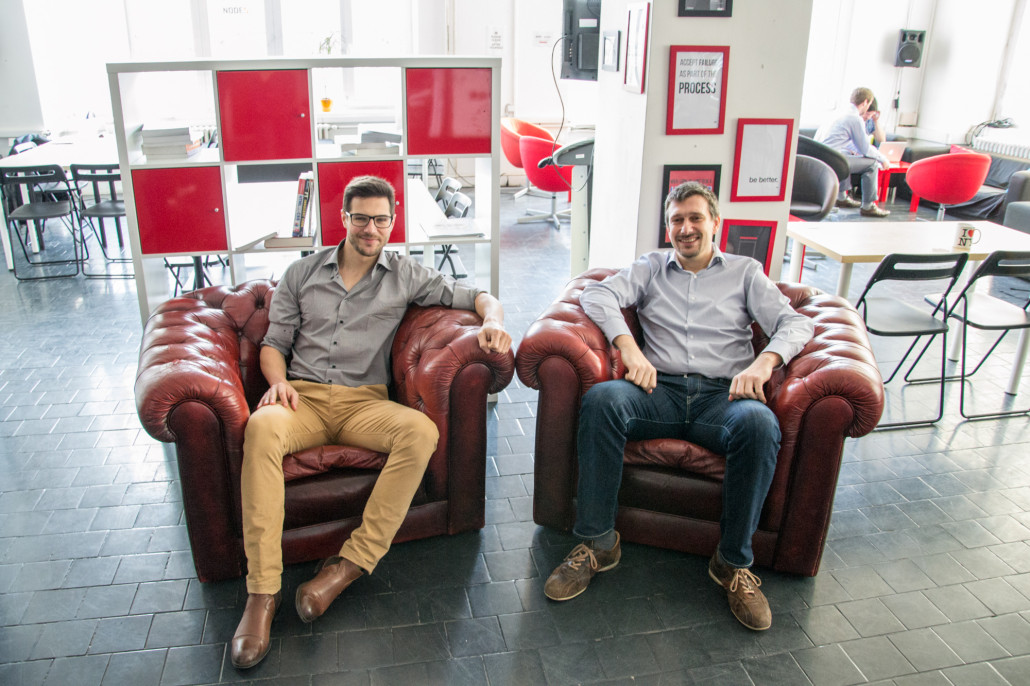
The StreamPlus Team
What’s been the biggest challenge for the Stream.Plus team since joining StartupYard? Why?
We are shaping our product offering into something our customers can easily understand and relate to. I have to thank StartupYard and all mentors that they have been a great help. Due to my online media background I tend to unconsciously expect that people have insight into media mechanics and that some trends are rather obvious. StartupYard and the mentors have opened my eyes to how important it is to be able to clearly communicate our vision and story.
People are currently obsessing about media ownership, but media was kind of “owned” by advertisers from the beginning.
Are there any particular mentors who had a disproportionate impact on your company’s development? How so?
There have been a bunch of mentors who provided valuable contacts and insights to us. I am currently waiting for a meeting in a big agency network, this type of partnership can have disproportionate impact on our development, but we don’t know yet.
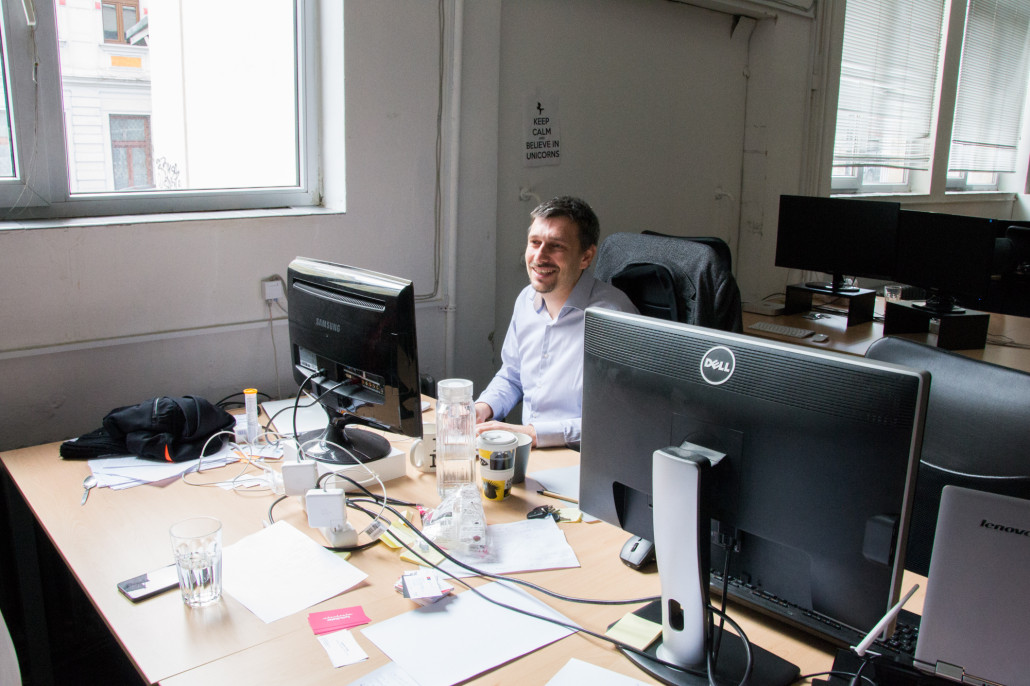
Where do you hope Stream.Plus, and branded video content in general, will be in the next 5 years?
The next 5 years will be quite dramatic for the TV industry, which is the last media sector to be really disrupted by online world realities, especially in the US, where the TV industry has been able to prolong the business status quo most successfully.
Stream.Plus wants to be a leader in permission based video content marketing. We want to define a new balance point between users as content consumers and marketers who are paying for the content. I think this relationship has to build from permission marketing principles (defined by Seth Godin in 1999) and transparency. Branded content channels are actually more transparent than “native” advertising on 3rd party media.
Are you currently looking for partners or pilot customers? How can people get in contact with Stream.Plus?
We are looking for forward thinking brands who are essentially willing to transform into media companies. We are also looking for agency partnerships, because in our vision of the future, creative agencies will create content and grow audiences for many brands at once.
Don’t forget to sign up for StartupYard’s 2016 Demo Day, April 6th, at the Royal Theater in Prague. Tickets available and going fast!
Neuron SoundWare: Making Sense of Sound
/in Interviews, Life at an Accelerator, Startups/by StartupYardNeuron Soundware is what we often call a “deep tech” startup. Like several of StartupYard’s alumni companies, they are unique in that they are operating at the edge of current technology, and developing processes and software that have never been tried before.
Neuron Soundware’s mission is bring machine learning and neural networks to sound and voice analysis- creating interfaces between machines and people, and between machines and mechanical devices, that are highly intelligent and adaptable to many applications. I caught up with CoFounder and CEO Pavel Konecny this week to talk about the company and its mission to understand and process sound:
Hi Pavel, tell us a bit about Neuron Soundware, what you do, and how the company came to be.
We build and train software that understands audio. Our technology is practically an auditory cortex in a computer- a digital brain. It’s all based on deep learning – the fastest-growing field in machine learning. That’s the kind of technology, that has just recently beaten the best human player in Go. It is all enabled by the increasing power of computing – especially thanks to GPU advances.
We started working on some prototypes in October last year. I worked for a global IT firm for the past 12 years, and I just returned to Prague after spending over 3 years in the Sydney office. It was a great time, but I felt that I needed to follow my passion for AI. So I convinced my friend and high school classmate. We initially worked on some of my ideas around data compression using neural networks. In November, we applied for StartupYard. It was a good decision, and it helped us to find the right business field for our technology.
Your team is probably working on the most complex problems of any startup in our program right now. How is your team uniquely qualified to solve problems using machine learning and neural networks?
All of the co-founders have a strong technical background. I studied cybernetics and biomedical science. And I’ve worked on many projects with different technologies. I did the first Hadoop Big Data project in Australia, and implemented high-performance calculations for smart meters. We were about to digitalize a video archive, so I also built a pilot implementation for the facial recognition of cricket players last year. That was a very exciting experience.
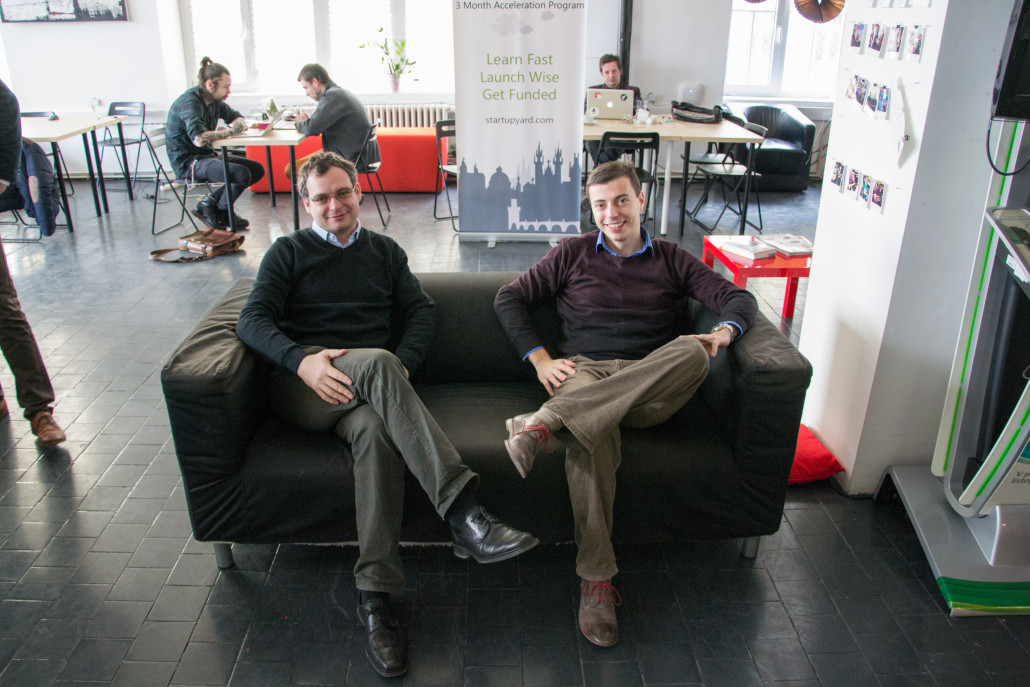
The Neuron Soundware Team: Pavel and Filip
Filip Sedlak has a Master’s degree in chemistry informatics. He worked many years for pharmaceutical companies. He was in charge of taking an algorithm and building applications for researchers in genetics. He is really brilliant at that. I am very glad that he joined our team.
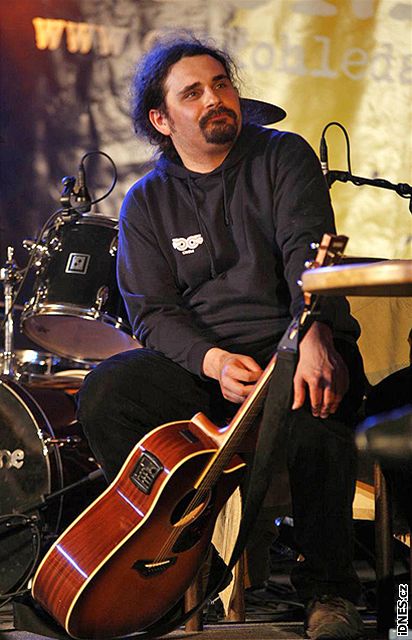
Co-Founder and Musician Pavel Klinger
Pavel Klinger is my very good friend. He studied biophysics at Charles University in Prague. He is an excellent coder as he has been programming since his childhood. He is also a musician. So that is one of the reasons we focus on audio. Neural networks are his old hobby. He built his first one when he was at high school. He wanted something to write his school homework instead of him. It did not work that well, but he could type a bit faster as the neural net was predicting the word he was going to type based on the first few letters. So it was an easy task to convince him to start a company using neural networks.
Can you tell us a bit more about how neural networks and machine learning software can help manufacturers and other industries?
Our technology analyzes sounds that machinery makes. We train it to recognize any anomalies or known issues. Sound and vibration are the most efficient way to detect mechanical malfunctions. However, the moving parts acoustics were typically too complex to make it practical. Till now. Our technology can manage these complexities, so we can inspect enclosed parts like gearbox using the sound it makes.
Our software is sort of like a very streamlined, simplified mechanic- but one that never gets distracted or bored. It can learn how an engine normal sounds, and it can learn which sounds signal a mechanical problem. Neuron Soundware’s technology works just like a human brain- but because of the complexity of a real brain, ours is only about as powerful as the brain of a small bee. But that’s enough, really, to understand quite a bit about complex sounds, and recognize problems by listening to them in a huge range of applications.
Neuron Soundware technology can also learn from “training data,” to reconstruct sounds and even voices, based on what it has already listened to. This has enormous applications in the future, when it comes to anything from call centers, to natural language AIs.
Our technology can eventually be used to generate the voice of a completely artificial mind, with emotion, ability to listen, and detect and understand complex emotions in whomever it’s talking to. It’s difficult to overstate how many applications this technology will have in the next decade. It’s simply enormous. For now, we are already able to reconstruct a real voice that the software has listened to, and to reproduce speech without using any sound files. Soon, we will be able to generate original, unique speech as well. I plan to demo this technology on April 6th at the StartupYard 2016 Demo Day.
Don’t forget to sign up for StartupYard’s 2016 Demo Day, April 6th, at the Royal Theater in Prague. Tickets available and going fast!
What are some of the other possible applications for your machine learning technology?
In addition to the industry sounds, we are developing some advanced services for call centers. It sounds like magic, but we are getting close to the production stage. For now. we are working on emotion detection and comprehensive voice modulation.
The way you say something is often more important than what you say. So we can start by modifying a customer service agent’s voice perfectly to the emotional state of the customer. For example, the direct sales team would sound nicer and more trustable. We can change accents, and make many other changes. In time, our technology could completely replace call center agents, with machines that never make mistakes, and never get tired or frustrated.
We also have plans in the area of IoT devices, where we could provide diagnostics and sound recognition in conjunction with other services. We’re currently working on a potential partnership in this area with a major Czech printing and IoT company, who have been incredibly supportive so far.
Q: You’re focusing initially on partnerships with device companies, such as 3D printer manufacturers. What do you hope to accomplish business-wise in the next year?
Industry sounds are quite simple compared to emotional detection in voices. We have achieved extremely high accuracy. Hence, we are planning to first address manufacturers with high-value products and large high quantities, such as car makers.
Neuron Soundware technology could provide a sound “guardian” to any moving part. We could hear that something is broken or even predict that it is going to break. We would license our algorithms and charge fees for every unit equipped with our system.
How about the longer-term strategy? Where do you hope to be as a company in 3-5 years? What kind of things will Neuron Soundware technology be doing further in the future?
Our plan is to master the process of learning. We believe that the next generation of applications will not be coded but “trained.” For example, we would replace most of the people working in call centers with programs that learn on the job. We would take a few months of historical data from the call center (voice and screen recording) and process it. Our algorithms would develop a complex customer interaction model that would not only consist of the conversation with the customer but also management the customer data in the backend systems. Call center agents are a kind of interface between calling customer and company systems. With our service in place, the call center traffic will be managed with a fraction of the current staff.
You’re a bit of a futurist, I’ve noticed. How do you think the overall role of AI and machine learning will grow within the foreseeable future?
A lot of our jobs will be done by machines and automated services. For example, it is much harder to make a living as a translator these days, when you are competing with Google translate. You might think that people are still better, but they won’t be forever. The same would happen in a lot of other areas.
Do you want to sort the best photos, videos and create an appealing movie from your vacation? Done. Exploration of what is the best market for my product would be just one click? An automated tool will create a set of ads and test them via Facebook in a day.
It would be a huge impact on the society. New jobs would need to be invented. We might even see taxation of computation time. If Moore’s law stays valid a few more decades, we would all have a choice. Either die or move our minds into machines and then live forever. But that’s all still in the far future. For now, AI still needs a way to interact with people and objects.
Neuron Soundware is paving the way for machines to be able to interact with the world based on sound- which is an incredibly important sense for a machine to have. Much of our conception of AI today is about natural language processing- programs listening to and understanding us and their environment. But that requires many innovations that are still in the future. We want to lead that effort.
Of any team at StartupYard, Neuron Soundware has had to work hardest on finding a go-to-market strategy. Why do you think that’s so difficult to do with AI and machine learning?
That is the counter-intuitiveness of machine learning. You do not need a lot of coding, but you need good training data sets. We can not build our services without our clients. We initially wanted to focus only on the call centers. However, the device diagnostics using sound is the low hanging fruit. As we say, a machine doesn’t have a lawyer! It’s ethically complicated to work with live customers, and that is a part of the legal and business world that has to keep evolving in the next few years. As you can see from many other areas of advancement in AI, such as self-driving cars, new laws and regulations are necessary, and they are coming. We believe the benefits to people far outweigh the short-term drawbacks.
You’ve been working on several potential partnerships. Can you tell us more about those?
We do have a partnership memorandum with some Czech universities. That would help our company in different dimensions. Firstly, we would have access to the latest research and people in our key areas. That would help us to grow our team and knowledge. Secondly, we can fund our product development via cooperation with the university laboratories as it is close to the leading edge of scientific research. So we could leverage their server infrastructure as it will be probably our highest cost. We are also looking for a strong business partner.
How has the StartupYard program affected the development of Neuron Software? Where do you think you would be if you hadn’t joined the accelerator?
It was a really great experience. We gained a lot of contacts, ideas and quick feedback. The mentors from StartupYard are valuable providing support to the Neuron Soundware team. We changed our focus from music to voice and industry sounds, largely due to the input of mentors we met in the program. A long series of workshops gave us an overview of what to expect and master in so many different areas. I would personally welcome prolonging the program by 3-4 weeks. So we would have a bit more time to digest all that information, meet more customers and iterate even more on our product.
Has any particular mentor at StartupYard had a particularly strong impact on your company’s development? How so?
Well I think it might be the StartupYard team, You and Cedric Maloux. All of the mentors gave us a lot of valuable input, but the StartupYard team also tells us what *not* to do. And that’s often even more important. So when I’m in doubt, I ask myself: “would Lloyd or Cedric do this?” And that helps me to find the right path.
Salutara: Your Health Matters
/in Interviews, Life at an Accelerator, Starting a Business, Startups/by StartupYardSalutara is a full-service online platform for medical travel.
Every year, 11 Million people seek medical procedures that are not accessible or affordable in their home countries. With Salutara as a trusted advisor and intermediary, patients can search and compare clinics, arrange procedures, plan, book, and pay for a whole trip in one place.
I sat down recently with the founders, Martin Cvetler and Petr Vankat, to talk about Salutara’s current status, and future plans. Here’s what they had to say:
Q: Hi Petr and Martin! Tell us a bit about Salutara. Where did the idea for a medical travel platform come from?
Petr: I was spending my 2014 New Years in Switzerland with my girlfriend at that time who is a dental hygienist. As we were walking through the center of Thun, I saw a walk-in store saying “Zahn reisen – Dental travel” on the sign above the door. It caught my attention so I came closer and found out they were sending citizens of Thun to Hungary for dental procedures.
They organised trips specifically designed for patients with any kind of dental problem. This whole concept was taking place offline and was aiming at a very limited clientele. I thought why not do this online and globally? There is clearly a demand, with 20 million people traveling every year for treatment. That is when the idea was born.
But I put it in a drawer after my return to Prague and we started seriously discussing it in the summer of 2015 and in August we signed up for the Startupyard FastLane. And you know the story from there. We went through all the steps in the selection process and eventually made it to the accelerator.
Martin: Our first idea was to concentrate on dentistry and our first work name was “Bite´n´Chew” [laugh] Then we started to research, expanded the idea to other treatments and we just could not find a website that would be easy to use for booking a medical treatment abroad. Salutara is for people seeking quality medical care who cannot find affordable and accessible treatment at home. It’s a complicated and time consuming decision-making process, and we want people to have a way to do it all within one platform. We want to become the world’s most innovative medical travel booking platform.
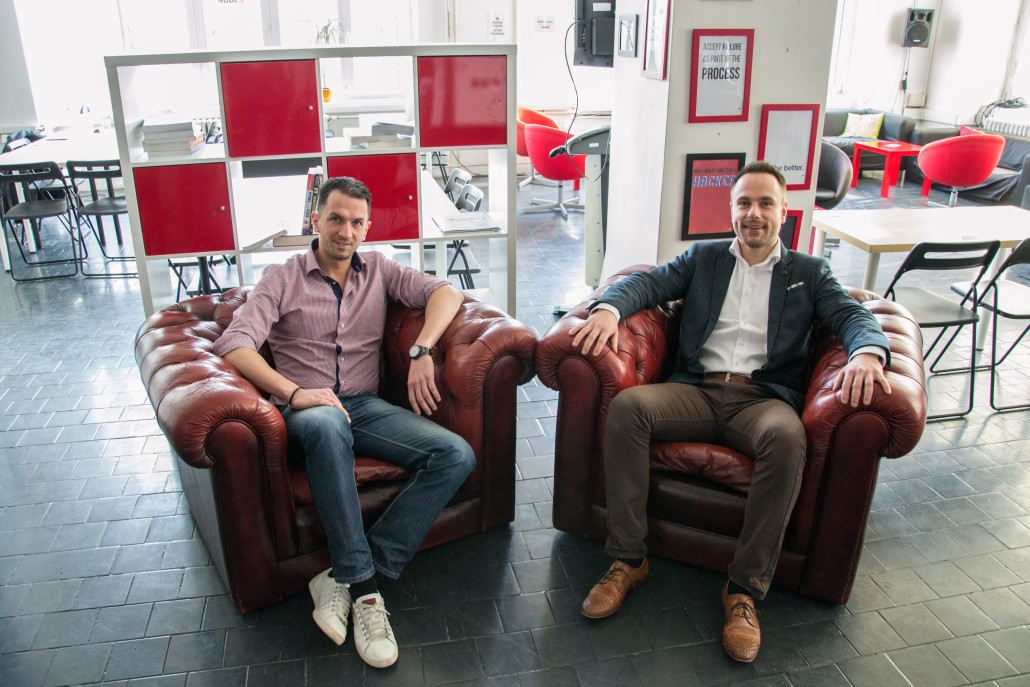
The Salutara Team: Martin Cvetler and Petr Vankat
Q: What are some of the main advantages of traveling abroad for medical treatments? What kinds of treatments are most popular for medical travel?
Petr: One of the most obvious advantages is the price difference between countries and continents.
Just to give you an idea, it is very common that patients for example from the USA are saving up to 80% of their medical costs when traveling for a hip replacement, dental restoration or cancer treatment abroad. Those can add up to huge sums- into the tens of thousands of dollars per treatment. A hip replacement in the US can cost upwards of $80,000, while the same treatment by an equally skilled surgeon in India might cost $10,000. That easily justifies the cost of going abroad.
You know, the number one cause of personal bankruptcy in the United States, believe it or not, is medical bills. That really makes no sense to me in the modern world. But where there is such a clear need, there must to be clear, easy to access alternatives.
But the US isn’t the only place with problems. Waiting times in various countries such as the UK or Poland are also a big issue, as they can go as high as months and in some specific cases including orthopedy or eye surgeries up to years.
On top of that, some countries are facing certain legislative barriers that can be seen in relation to procedures such as In Vitro Fertilisation. At Salutara, we strongly believe that every human being should have a right to access that type of treatment, and we are working hard to provide options and accessibility for all the cases mentioned above.
Martin: We want to inform and educate customers about all possibilities that the medical travel industry offers. One example is the EU Directive 2011/24 that enables all EU citizens have their insurance cover procedures anywhere within EU. Not many people know this, and not many people use it. On the other hand we want to give our clients the opportunity to choose and decide if they want to go abroad or not. They can compare both options, decide and book abroad or at home. We just want to give them the freedom to choose and a tool to make it safe and easy.
Q: What are some of your key challenges in approaching consumers? How will you convince people that medical travel is for them?
Petr: We understand from our own experience that it can be tough to even decide where to go on holiday! Is the food going to be good there? Will it be safe to walk on the streets after dark? Will I be able to charge my iPhone there and get wi-fi? Generally speaking people are not always very open to changes and exploration. Especially when it comes to something so important and precious as human health.
Certain things are easy to sell. Medical travel can be vastly cheaper, and certain treatments will only be available abroad, depending on where a patient is coming from. But it’s about more than that. A person thinking about medical travel is concerned about trust and safety, and building trust is one of our biggest challenges going ahead. People deserve their dignity in medical care, and sadly that’s not something they can always have. So we want to change the way medical care works for those who can’t now get what they deserve.
That is why we are focusing on providing top notch care for our first customers – the early adopters or ambassadors. Sharing and promoting their experience on the website as well as on our social media profiles is going to be crucial- getting the word out through people like that will open up new possibilities for people who haven’t even considered medical travel. Good word of mouth plays an important role in the process of convincing others that it is safe and supremely beneficial to make the decision to pack up a small bag and take off for a treatment abroad.
Q: Let’s talk a bit about Salutara. What features and capabilities will you launch with? Where do you see the product in a year or two?
Martin: Customers will be able to connect directly with clinics and their doctors for unlimited online consultations and price quotes. They will be able to book a treatment and pay the deposit.
Later on we want to provide the whole travel package, including flight and hotel booking. Everything in one place. A lot of patients use medical travel for sightseeing before the treatment or they stay longer after the surgery to recover and come back home all fit.
Most competitors in this market right now are focusing on connecting clinics and patients. That’s great, but we want to provide a whole experience- start to finish. That is what we’re working towards: a platform that you can use exclusively to get reputable, safe, and fairly priced treatment anywhere in the world.
There are plenty of resources now available for medical travel and for patients seeking treatments. There are great services like RealSelf, which provides a community for people to discuss issues around cosmetic surgeries. We want to provide the same value to people- a place where they can find trusted opinions and advice, and also connect with the right doctors and clinics to provide the right treatments.
Q: What will be your focus within the next year? How will you approach the market, and which segments will you focus on in order to grow?
Martin: We will launch small and lean. Just with a couple of procedures, clinics in the Czech Republic and UK market on the patient side. After we optimize our workflow and processes, we will scale up with more treatments and clinics in the same markets and then expand within the EU in the second half of 2016 and globally in 2017. We’re starting with less invasive procedures like cosmetic dentistry, hair transplantation, sleep disorder, cosmetic surgeries, LASIK (laser eye surgeries). Then IVF and life threatening diseases and their treatment like oncology.
Our dream, as Petr said, is to be a trusted platform for patients and clinics the world over- so that people will always know what treatments and doctors may be available to them anywhere in the world. Right now, medical travel is very opaque- it’s run through backchannels, and patients rarely have any sense of who they are dealing with. That’s just not good enough. Fair, open, and trustworthy markets need transparency, and that’s what we will provide.
Q: Obviously partnerships are going to be a key factor in Salutara’s growth and success. Which partners do you view as strategically important, and how do you plan to build these partnerships?
Petr:There are lots of ways to think about partnerships in our case. We believe that the first partners should be charities of all sorts. It is important to give back. And those who are in need or unfortunately suffer from a specific condition deserve our primary attention.
We would like to donate a part of each transaction to a charity of choice for each patient who uses our services. Next in line of common sense, are travel agents both in countries where our patients travel from and in the countries of our clinics. Sport clubs and associations have a natural connection to what we are doing too, especially those where injuries happen often such as rugby or ice hockey.
We encourage anyone reading this to reach out to us with partnership suggestions from their network. We want to hear from you!
Q: You started at StartupYard with essentially nothing but an idea and a vision, and now you’re almost ready to launch. Have you been surprised by your own speed and execution?
Petr: I am personally naturally very impatient and yesterday was already too late. So until we fulfill our goal of becoming the world’s biggest platform connecting patients with clinics all over the world, and handling medical travel on every continent, I will not be satisfied with the pace of our progress. Nevertheless just being around such amazing influencers as Cedric Maloux or yourself, Lloyd, and having the priceless opportunity to consult with our great mentors helped us speed up the process a great deal. We can never thank them enough.
Martin: I will be very open here. I was a little naive a few months ago. The deeper we are in this industry the more I realize how much more is ahead of us and also what we could have done differently, faster and better. We have decided to make some compromises on the product and market entry in order to launch fast and we have a long list of updates already. The truth is we chose a very complicated product and market. And you just cannot do everything at one moment. You have to prioritize every day, stay focused but be able to pivot at the same time. All of this is very challenging but I enjoy it quite a bit.
Q: How has working with StartupYard affected the development of Salutara? Have any particular mentors had a big impact on your development?
Petr: As I mentioned above StartupYard is like a nitro boost in the Fast and Furious franchise. Being friends with one of the 2015 SY startups (TeskaLabs), we knew what we were going into and busted our bottoms to make it to the 2016 cohort, because we were aware of the impact SY had on TeskaLabs. To be specific at StartupYard you learn a great deal of skills from pitching, creating awesome landing pages to creating meaty content and to confidently ask investors for money. I am sure we will start to fully appreciate the help of StartupYard only after a couple of years from now looking back at the days spent here.
As far as mentors, the initial avalanche of heterogenous opinions and suggestions naturally creates a bit of perplexity when you want to take the advice and put it into practise right when the consultation is over. The mentoring month helped Salutara shape it’s business strategy and recognize some of the threats and weaknesses as well as strengths and opportunities.
Now as the dust is slowly settling, we are revising our notes and realizing the value of suggestions and tips we in some cases did not see immediately. To mention a few names in particular – Liva Judic helped us in the process of renaming our company, to Salutara. I cannot leave out Ladana Edwards whose persistence in support has been endless. Marketa Kabatova and her great input on Google advertising, Jeanne Trojan and her factual to the point tips on self presenting, Veronika Prikrylova, Klara Gajduskova, Karin Pomaizlova…Those are just a few, and all the mentors had something to contribute to our launch and growth, and we are super grateful for the chance to get to know them and learn from them. Thank you all, guys, you have been phenomenal! Hope we will show our appreciation by becoming the global leader in healthcare provision without having doctors on payroll.
Martin: Honestly I cannot imagine how we could move forward so fast without the support of the whole SY team, shareholders and mentors. It would be very long and painful without this.
Q: You’re currently expanding your team. Who are the kinds of people you are looking for?
Martin: Yes, we are now hiring a native English journalist/blog writer, social networks specialist, SEO specialist. Then two more coders, designer, key account for clinics and customer service specialists. We want a team of people that have drive and are results oriented. I want to also thank here Jiří, Jakub and Michal for their work, we are happy to work together.
Q: Where can potential partners, clinics, or job seekers get in touch with Salutara?
Petr: Salutara can be reached on our Twitter plus Facebook profiles and of course e-mails (petr@salutara.com or martin@salutara.com).
A Day in the StartupYard World
/in Startups/by StartupYardBecause we work around startups every day, it’s sometimes helpful to step back and take a look at the bigger picture. We asked ourselves recently: “what kind of impact do we really have on the world as a whole?”
While it’s true that StartupYard companies touch the lives of millions of people every day, part of the magic of technology is that the vast majority of those people have no idea that when they pick up their smartphone or buy something online, or search for something in an e-shop, or a host of other activities, they are touching a product or service that started in our “yard.”
So we thought we’d try something fun, and give you this- a creative imagining of a single day, from an ordinary person, who just happens to be constantly in contact with products and services we helped bring into the world. While probably no single day would actually look like this, it is a composite of a real day shared by many people, all around the world, who interact with StartupYard companies.
A Day in the StartupYard World
You wake up at 9am, and start off by browsing your favorite content online. These sites are monetized using NeuronAd, delivering you a fast, ad-lite experience. You notice an ad for a new movie coming out, and you check your budget with BudgetBakers, to be sure you can afford to go see it tonight, and pay for the babysitter you booked on Hlidacky.cz. You’ve been saving up to get a laser eye surgery, and you’re planning on using Salutara to book a trip to the Czech Republic, but the good news is that it will only cost a fraction of what it would cost at home.
To your delight, BudgetBakers informs you that ClaimAir has sent you 400 Euros as compensation for a delayed flight you had last month, which you booked at the last minute for only 50 Euros with Speedifly. You decide to really spoil the kids tonight, and order them their favorite pizza from DameJidlo.
You use Gjirafa’s search engine to look for an eshop that sells the best tablets, and you soon see recommendations for the best deals, with ads hosted on Gjirafa’s ad network, advertising products that have been identified and priced using TrendLucid’s ecommerce intelligence platform. The eshop you pick runs smoothly because it is being constantly checked for bugs by Testomato. You buy a new tablet, using Gjirafa’s own ecommerce solution, and register the warrantee with Warrantly, so that you’ll never be stuck having lost the receipt. You remember the tablet from an interactive display ad you saw at the local shopping center, courtesy of TotemInteractive.
After your purchase, which is secured by TeskaLabs’ secure mobile gateway, you see a one-question survey generated by SatisMeter, asking you to give feedback on your experience, which you gladly do. The purchase is automatically entered in your BudgetBakers budget.
Later that day, as you’re creating handmade crafts to sell on Shoptsie, you experience an internet outage. Logging onto a public wifi hotspot using Myia, you tweet at the telecom provider that you’re fed up with their lousy service. Thanks to BrandEmbassy’s social CRM platform, the telecom gets back to you in moments to resolve the issue, and a workman is dispatched shortly after. The call with the telecom sounds like it’s from a real person, but the friendly and pleasant voice is being generated by Neuron Soundware technology, which is able to understand everything you say, and gauge your emotional state by listening to your voice.
All this activity has made you tired, so you turn on StreamPlus, and watch a few branded videos from your favorite lifestyle companies to relax. Later, you check in on Works.io, and spot a few paintings from a new artist you’d like to keep an eye on. You decide to book a romantic private cruise on the water tonight with your partner using Boatify.
Don’t forget to sign up for StartupYard’s 2016 Demo Day, April 6th, at the Royal Theater in Prague. Tickets available and going fast!


